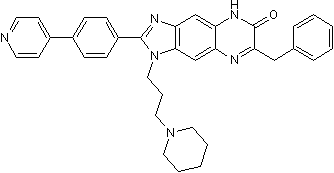Tyrosine Kinase
- IGFBR(1)
- Bcr-Abl(73)
- Ack1(4)
- Axl(6)
- ALK(61)
- BMX Kinase(4)
- Broad Spectrum Protein Kinase Inhibitor(11)
- c-FMS(35)
- c-Kit(65)
- c-MET(91)
- c-RET(7)
- CSF-1R(3)
- DDR1/DDR2 Receptor(1)
- EGFR(251)
- EphB4(2)
- FAK(34)
- FGFR(104)
- FLT3(102)
- HER2(19)
- IGF1R(33)
- Insulin Receptor(45)
- IRAK(32)
- ITK(12)
- Lck(2)
- LRRK2(23)
- PDGFR(117)
- PTKs/RTKs(5)
- Pyk2(6)
- ROR(41)
- Spleen Tyrosine Kinase (Syk)(35)
- Src(105)
- Tie-2 (3)
- Trk(37)
- VEGFR(203)
- Kinase(0)
- Discoidin Domain Receptor(15)
- DYRK(26)
- Ephrin Receptor(13)
- ROS(15)
- RET(34)
- TAM Receptor(28)
Products for Tyrosine Kinase
- Cat.No. Product Name Information
-
GC65966
BPI-9016M
BPI-9016M is a potent, orally active, and selective dual c-Met and AXL tyrosine kinases inhibitor. BPI-9016M suppresses tumor cell growth, migration and invasion of lung adenocarcinoma.
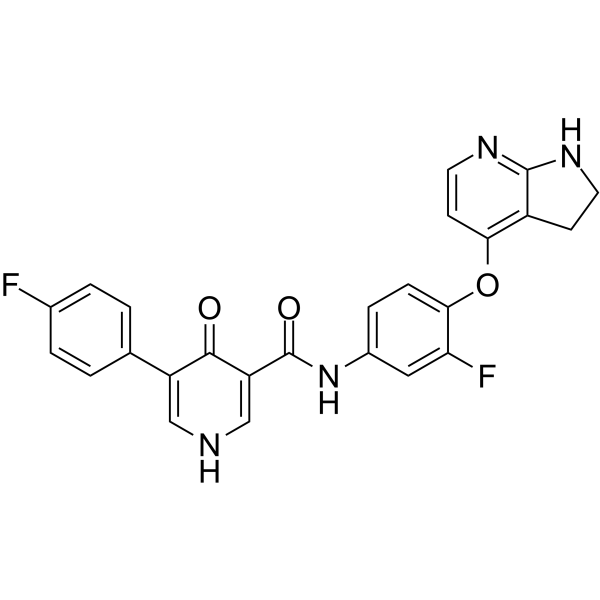
-
GC41631
BPIQ-I
BPIQ-I is a quinazoline that inhibits the tyrosine kinase activity of the epidermal growth factor receptor (IC50 = 0.025 nM).

-
GC19080
BPR1J-097
BPR1J-097 is a novel potent FLT3 inhibitor with an IC50 of 11 nM.

-
GC35544
BPR1J-097 Hydrochloride
BPR1J-097 Hydrochloride is a novel and potent FLT3 inhibitor with an IC50 of 11?nM.
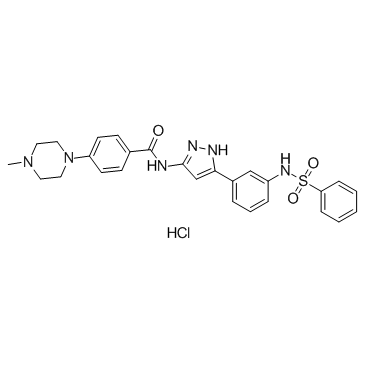
-
GC35545
BPR1K871
BPR1K871 is a potent and selective dual FLT3/AURKA inhibitor with IC50s of 19 nM and 22 nM for FLT3 and AURKA, respectively, acts as a preclinical development candidate for anti-cancer therapy.
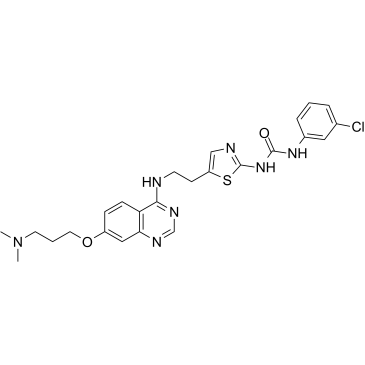
-
GC18718
bpV(pic) (potassium hydrate)
bpV(pic) is a bisperoxovanadium (bpV) compound that inhibits several different protein tyrosine phosphatases (PTPs), with selectivity for PTEN (IC50 = 31 nM).
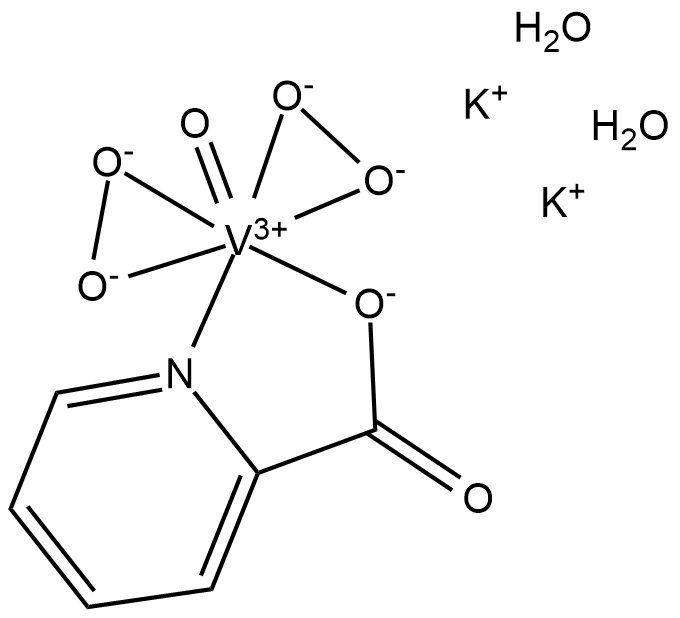
-
GC42972
Brain-Derived Acidic Fibroblast Growth Factor (1-11) (bovine) (trifluoroacetate salt)
Brain-derived acidic fibroblast growth factor (brain-derived aFGF) (1-11) is a peptide fragment of brain-derived aFGF.

-
GC19084
Brigatinib
A highly potent and selective ALK inhibitor
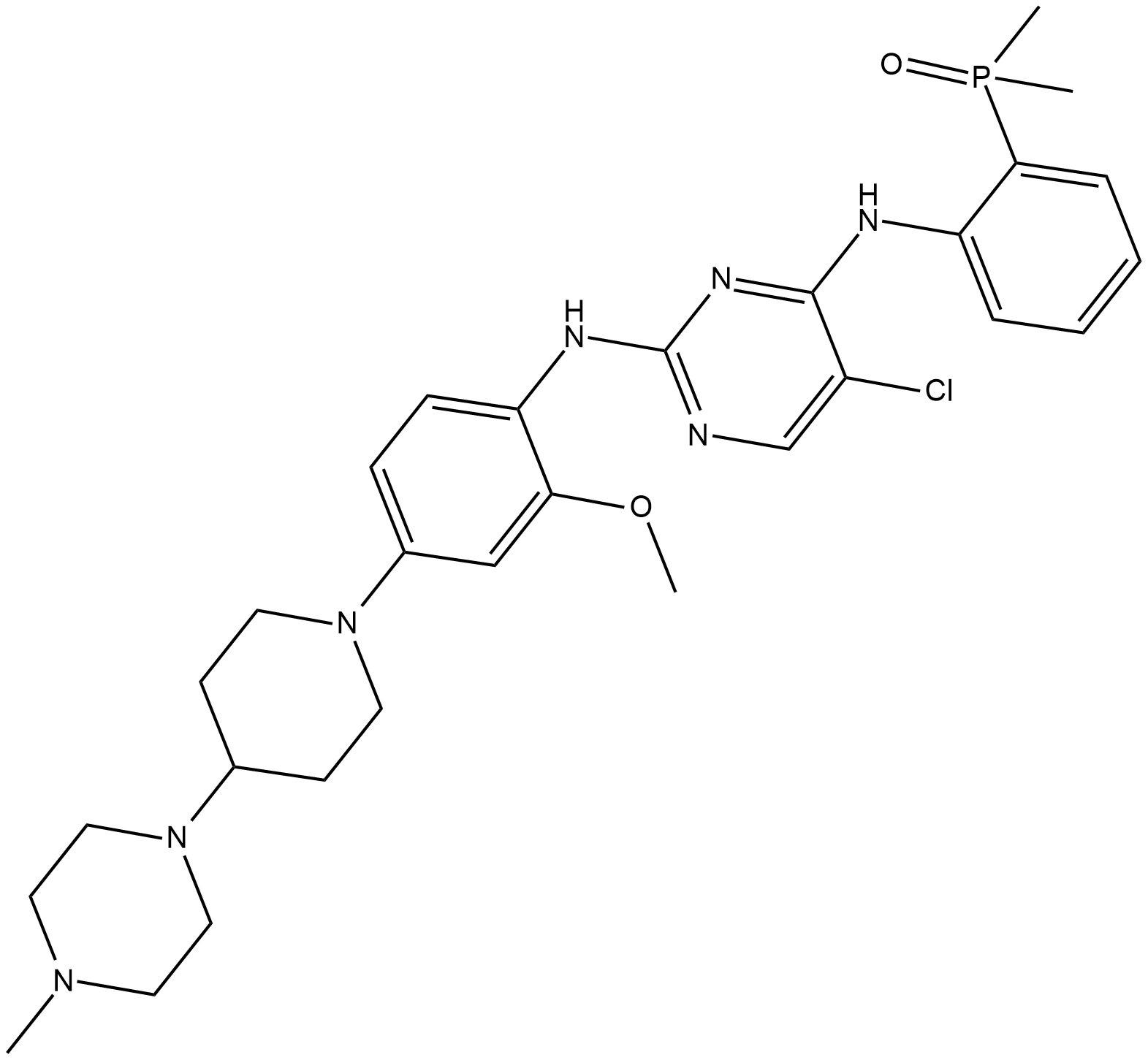
-
GC11692
Brivanib (BMS-540215)
Brivanib (BMS-540215) (BMS-540215) is an ATP-competitive inhibitor against VEGFR2 with an IC50 of 25 nM, and has moderate potency against VEGFR-1 and FGFR-1, but >240-fold against PDGFR-β.
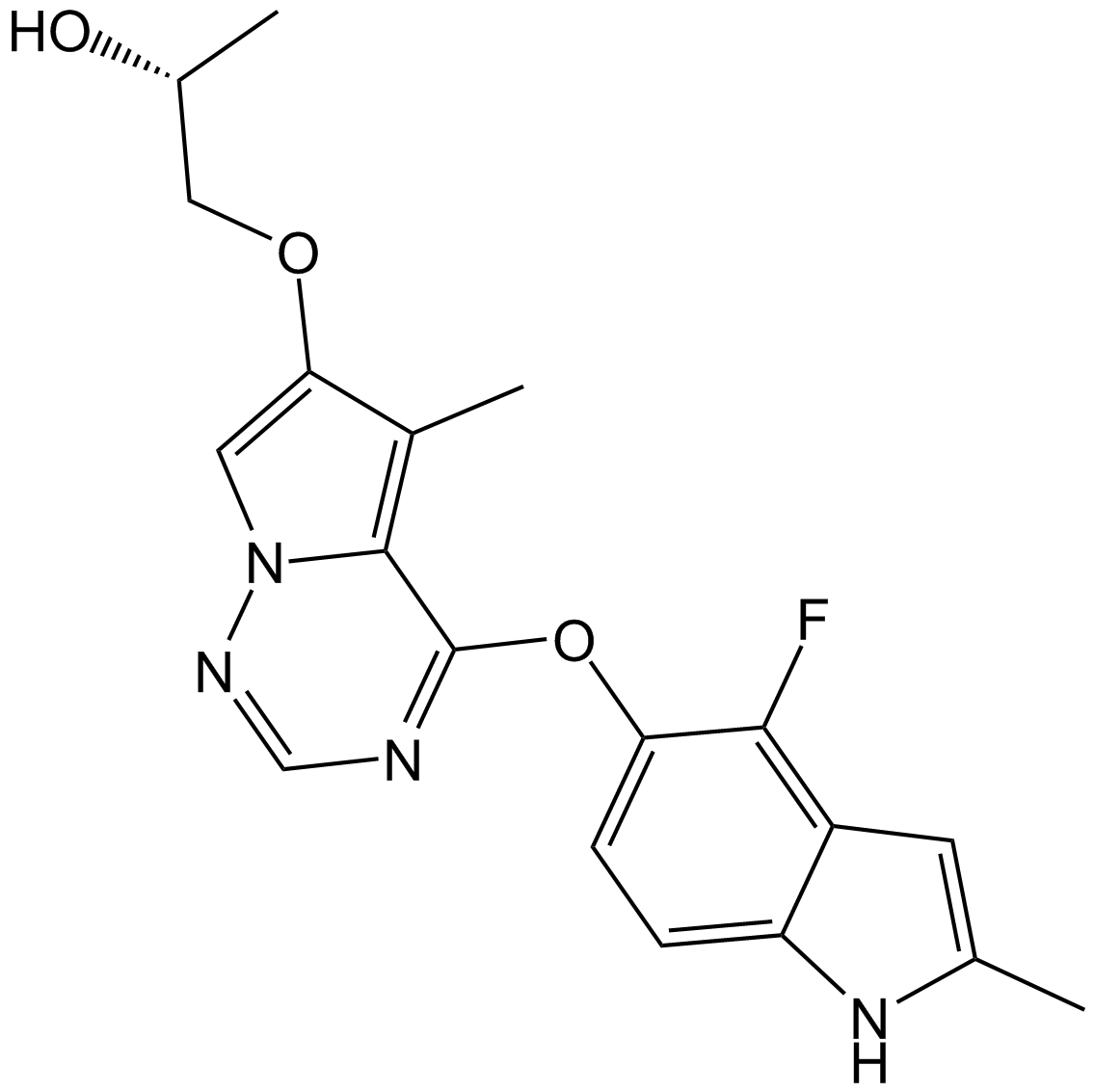
-
GC14238
Brivanib Alaninate (BMS-582664)
Brivanib alaninate (BMS-582664) is an ATP-competitive inhibitor against VEGFR2 with an IC50 of 25 nM; has moderate potency against VEGFR-1 and FGFR-1, but more than 240-fold against PDGFRβ.
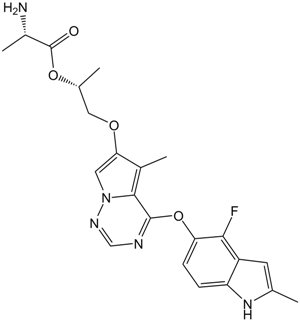
-
GC34509
BT-13
BT-13 is a potent and selective glial cell line-derived neurotrophic factor (GDNF) receptor RET agonist independently of GFLs, promoting neurite growth from sensory neurons in vitro and attenuates experimental neuropathy in the Rat.
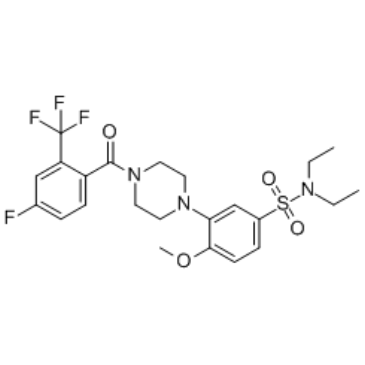
-
GC10944
Butein
Protein kinase inhibitor
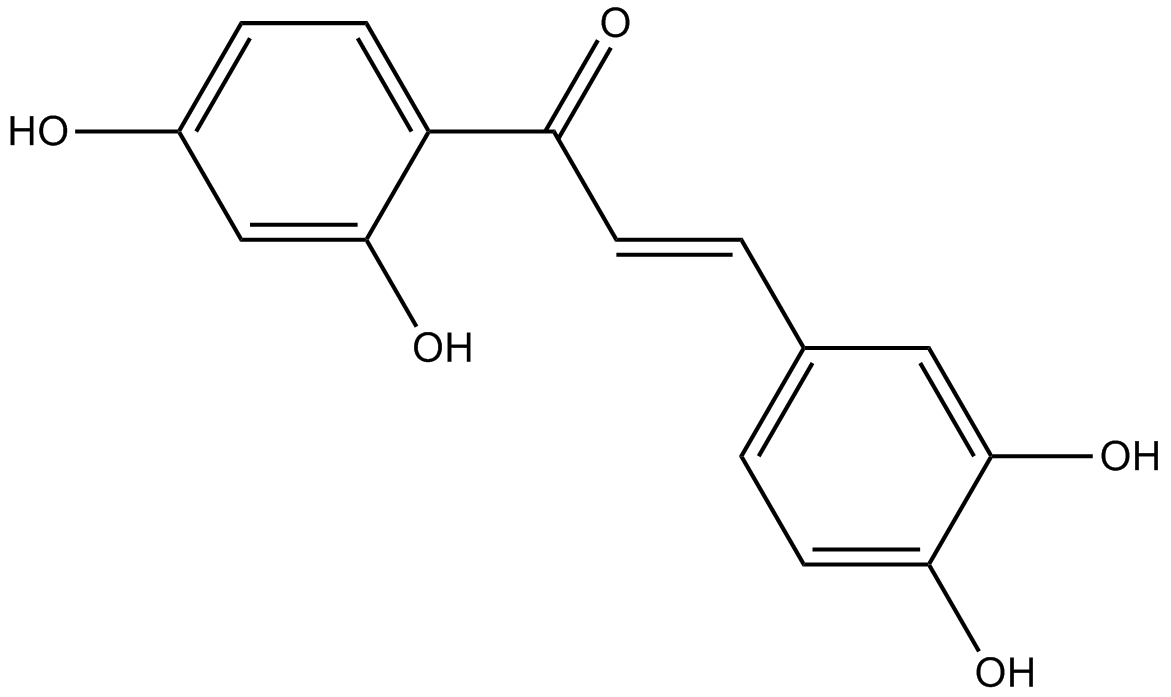
-
GC34529
c-Fms-IN-1
c-Fms-IN-1 is a FMS kinase inhibitor with an IC50 of 0.0008 μM.
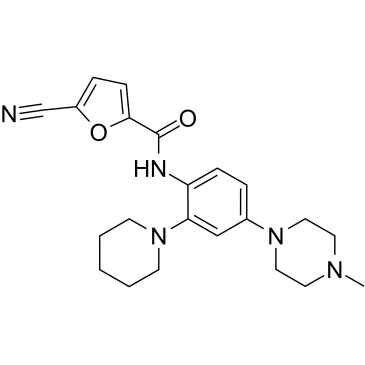
-
GC35663
c-Fms-IN-10
c-Fms-IN-10 is the derivative of thieno [3,2-d] pyrimidine, an kinase inhibitor of FMS (Colony stimulating factor-1 receptor, CSF-1R) with IC50 of 2 nM.
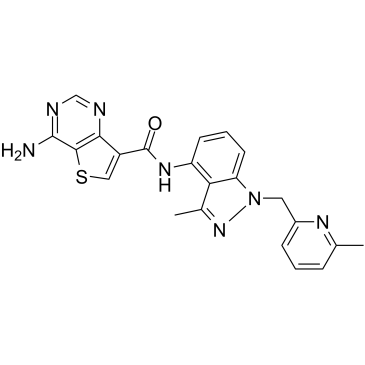
-
GC66028
c-Fms-IN-13
c-Fms-IN-13 (compound 14) is a potent FMS kinase inhibitor with an IC50 value of 17 nM. c-Fms-IN-13 can be used as an anti-inflammatory agent.
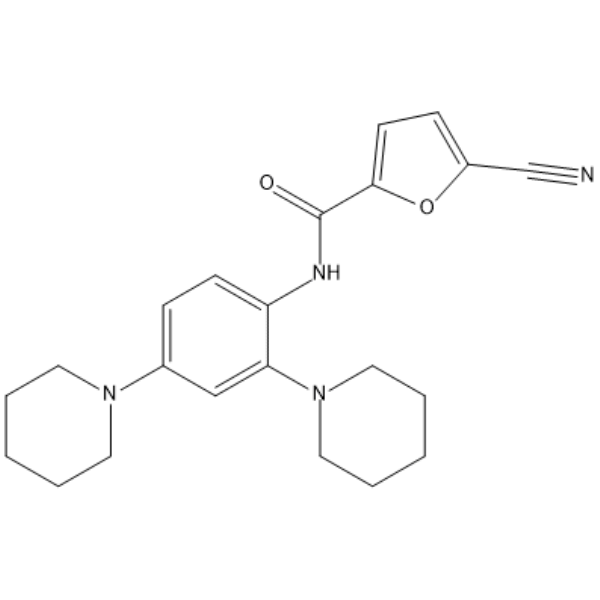
-
GC35664
c-Fms-IN-3
c-Fms-IN-3 is a novel c-Fms kinase inhibitor with a potential as anti-inflammatory agent and antirheumatic agent.
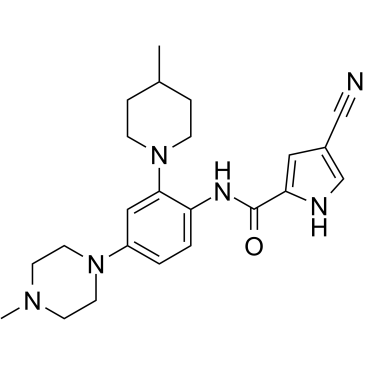
-
GC35665
c-Fms-IN-8
c-Fms-IN-8 (compound 4a) is a colony stimulating factor-1 receptor (CSF-1R, c-FMS) Type II inhibitor, with an IC50 of 9.1 nM.
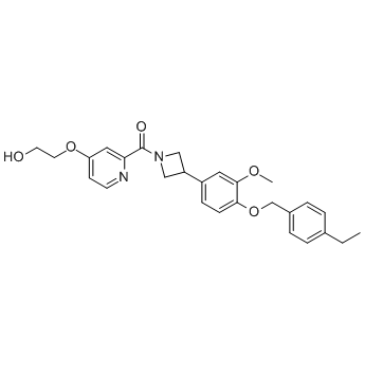
-
GC35666
c-Fms-IN-9
c-Fms-IN-9 is a c-FMS inhibitor extracted from patent WO2014145023A1, Compound Example 7. c-Fms-IN-9 inhibits unphosphorylated c-FMS kinase (uFMS) and uKIT with IC50s of <0.01 μM and 0.1-1 μM, respectively.
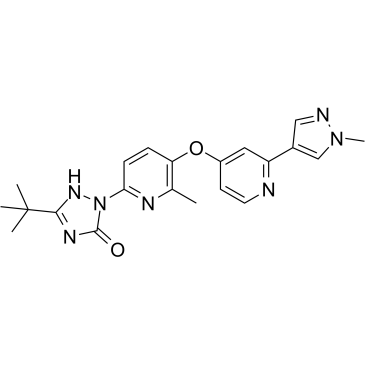
-
GC19106
c-Kit-IN-1
c-Kit-IN-1 is a potent inhibitor of c-Kit and c-Met with IC50s of <200 nM.
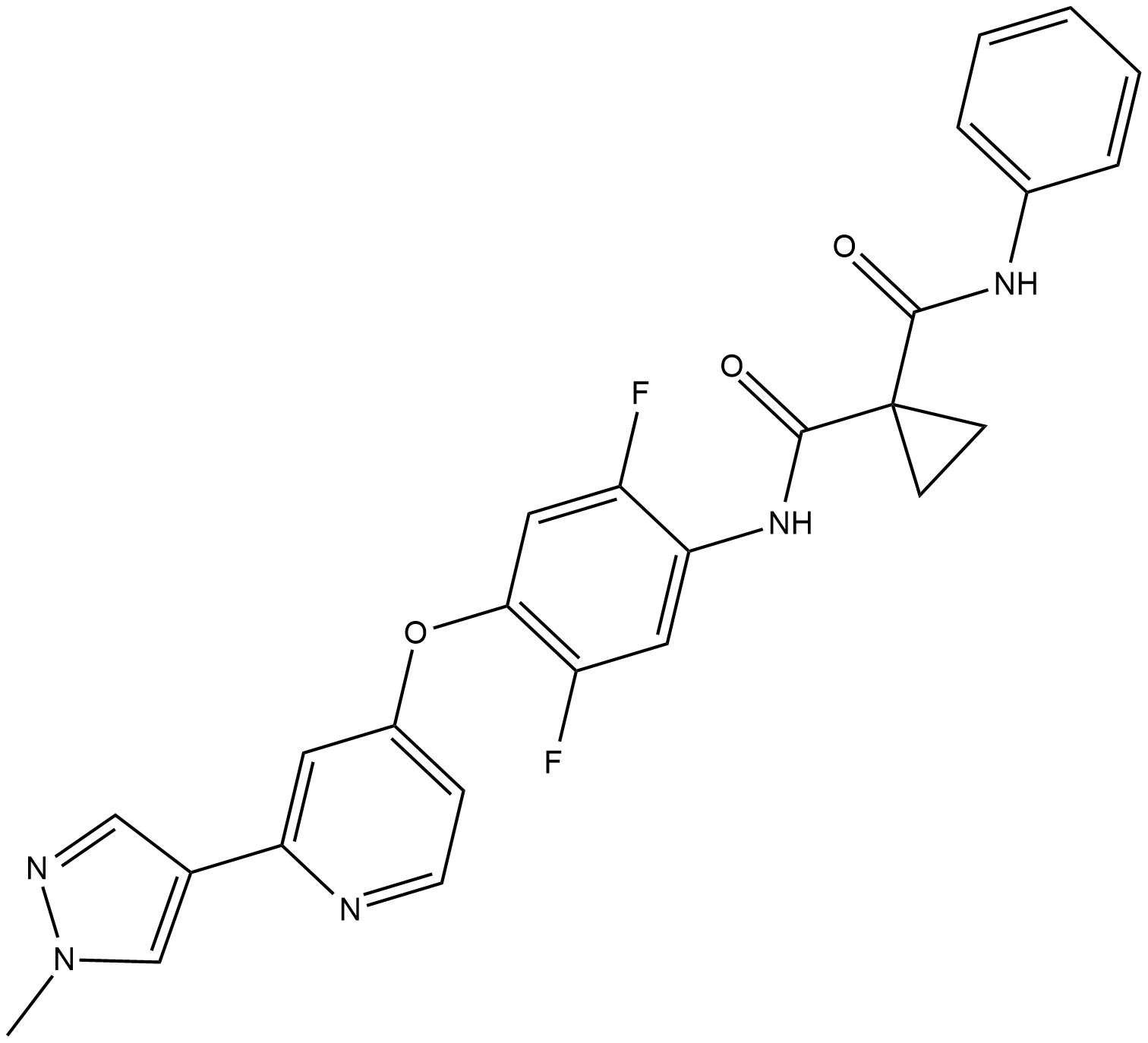
-
GC35705
c-Kit-IN-2
c-Kit-IN-2 is a c-KIT inhibitor with an IC50 of 82 nM, shows superior antiproliferative activities against all the three GIST cell lines, GIST882, GIST430, and GIST48, with GI50s of 3, 1, and 2 nM, respectively.
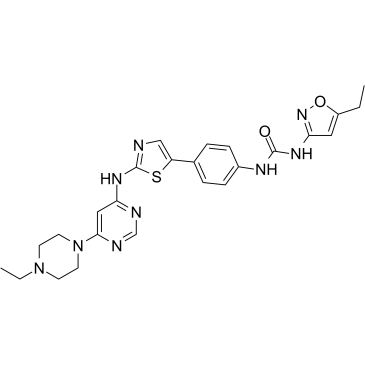
-
GC38595
c-Kit-IN-3
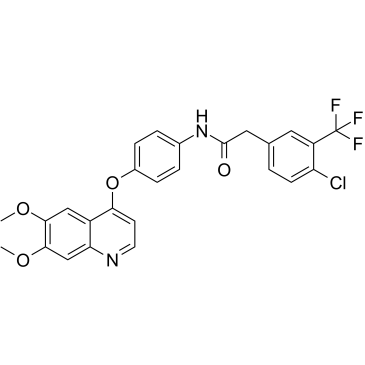
-
GC38756
c-Kit-IN-3 D-tartrate
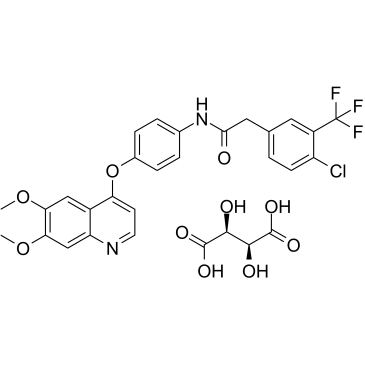
-
GC38757
c-Kit-IN-3 hydrochloride
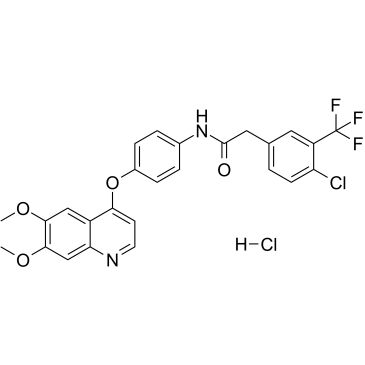
-
GC65948
c-Kit-IN-5-1
c-Kit-IN-5 is potent inhibitor of c-Kit, with IC50s of 22 nM and 16 nM in kinase assay and cell assay, respectively. c-Kit-IN-5 shows more than 200-fold selectivity for c-Kit over KDR, p38, Lck, and Src. c-Kit-IN-5 also exhibits desirable pharmacokinetic properties.
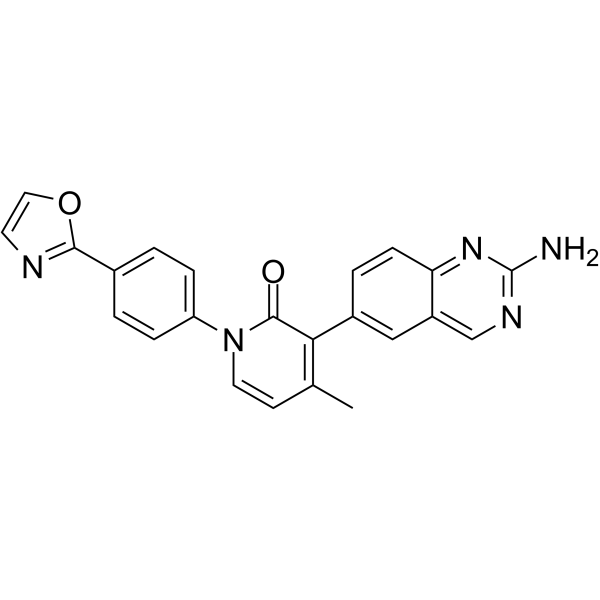
-
GC35716
c-Met inhibitor 1
c-Met inhibitor 1 is an inhibitor of the c-Met receptor signaling pathway useful for the treatment of cancer including gastric, glioblastoma, and pancreatic cancer.
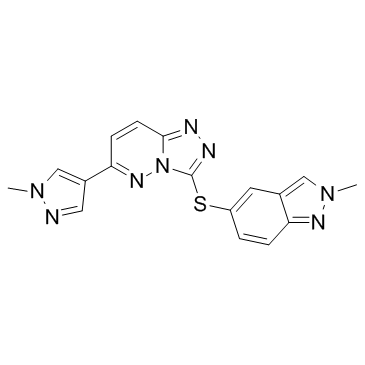
-
GC35717
c-met-IN-1
c-met-IN-1 (compound 16) is a potent and selective c-Met inhibitor, with IC50 of 1.1 nM, with antitumor activity..
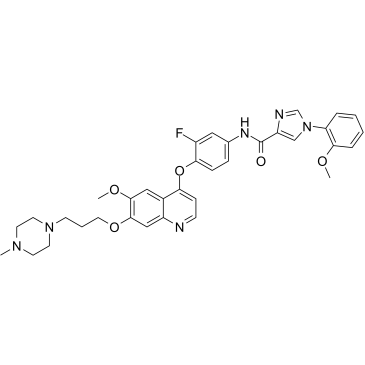
-
GC33203
c-Met-IN-2
c-Met-IN-2 is a potent, selective and orally available c-Met inhibitor, with an IC50 of 0.6 nM, with antitumor activity.
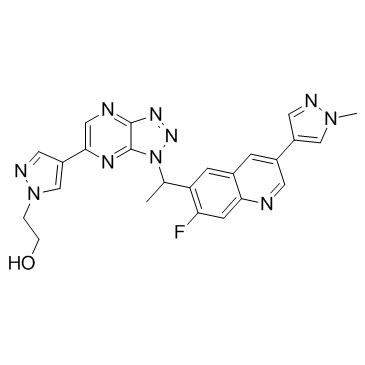
-
GC32748
CA-4948
CA-4948 is a selective, potent and orally active interleukin-1 receptor-associated kinase 4 (IRAK4) inhibitor, extracted from patent WO2015104688 (example 1).
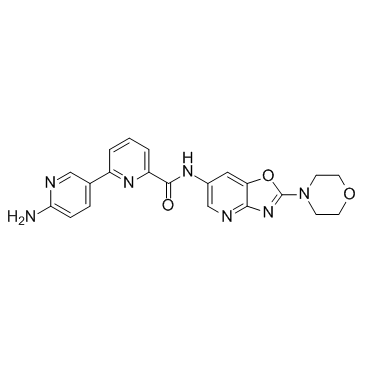
-
GC15779
Cabozantinib (XL184, BMS-907351)
Cabozantinib (XL184, BMS-907351) is a potent and orally active inhibitor of VEGFR2 and MET, with IC50 values of 0.035, and 1.3 nM, respectively. Cabozantinib (XL184, BMS-907351) displays strong inhibition of KIT, RET, AXL, TIE2, and FLT3 (IC50=4.6, 5.2, 7, 14.3, and 11.3 nM, respectively). Cabozantinib (XL184, BMS-907351) shows antiangiogenic activity. Cabozantinib (XL184, BMS-907351) disrupts tumor vasculature and promotes tumor and endothelial cell apoptosis.
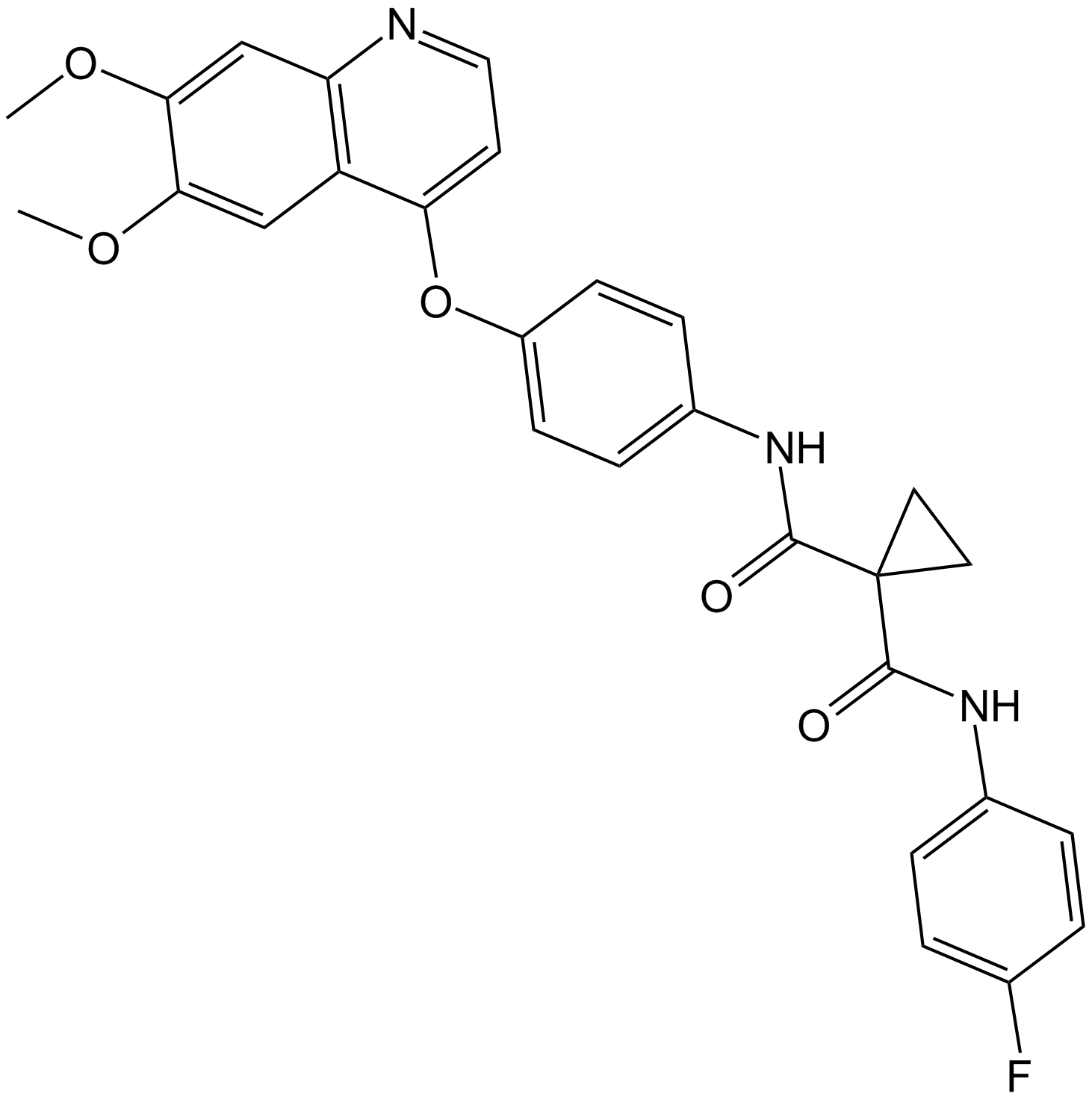
-
GC12531
Cabozantinib malate (XL184)
Cabozantinib malate (XL184) (XL184 S-malate) is a potent multiple receptor tyrosine kinases inhibitor that inhibits VEGFR2, c-Met, Kit, Axl and Flt3 with IC50s of 0.035, 1.3, 4.6, 7 and 11.3 nM, respectively.

-
GC67948
Cabozantinib-d6
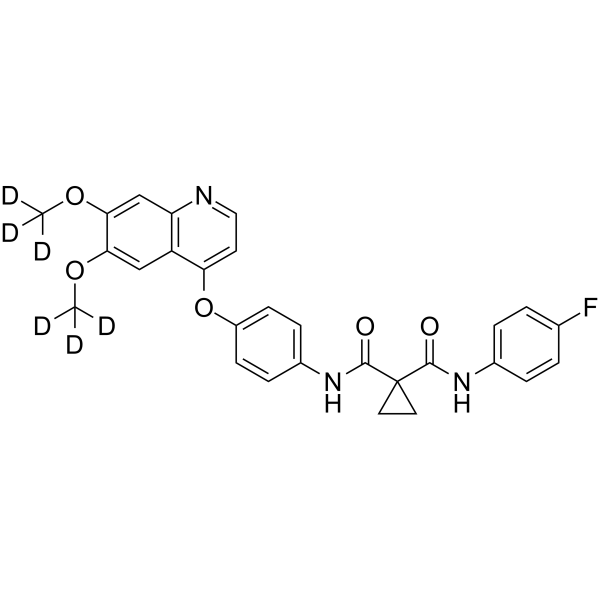
-
GC50024
Caffeic acid-pYEEIE
Phosphopeptide ligand for src SH2 domain

-
GC64564
Caffeic acid-pYEEIE TFA
Caffeic acid-pYEEIE TFA, a non-phosphopeptide inhibitor, exhibits potent binding affinity for the GST-Lck-SH2 domain.
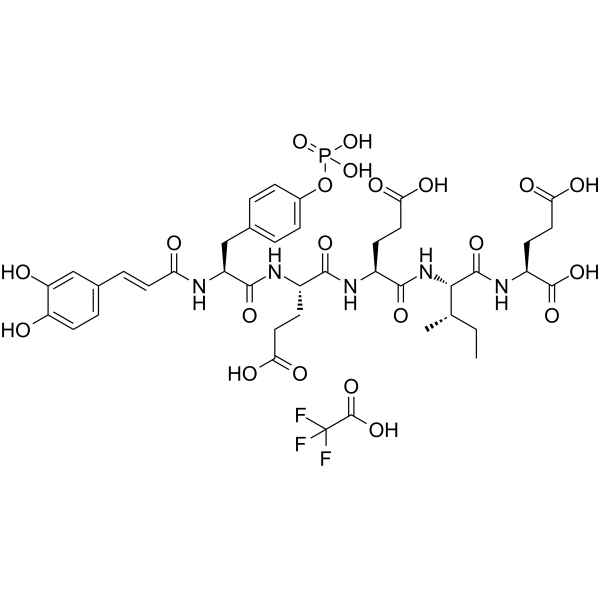
-
GC12910
Canertinib (CI-1033)
Canertinib (CI-1033) (CI-1033;PD-183805) is a potent and irreversible EGFR inhibitor; inhibits cellular EGFR and ErbB2 autophosphorylation with IC50s of 7.4 and 9 nM.

-
GC12087
Canertinib dihydrochloride
A pan-ErbB tyrosine kinase inhibitor
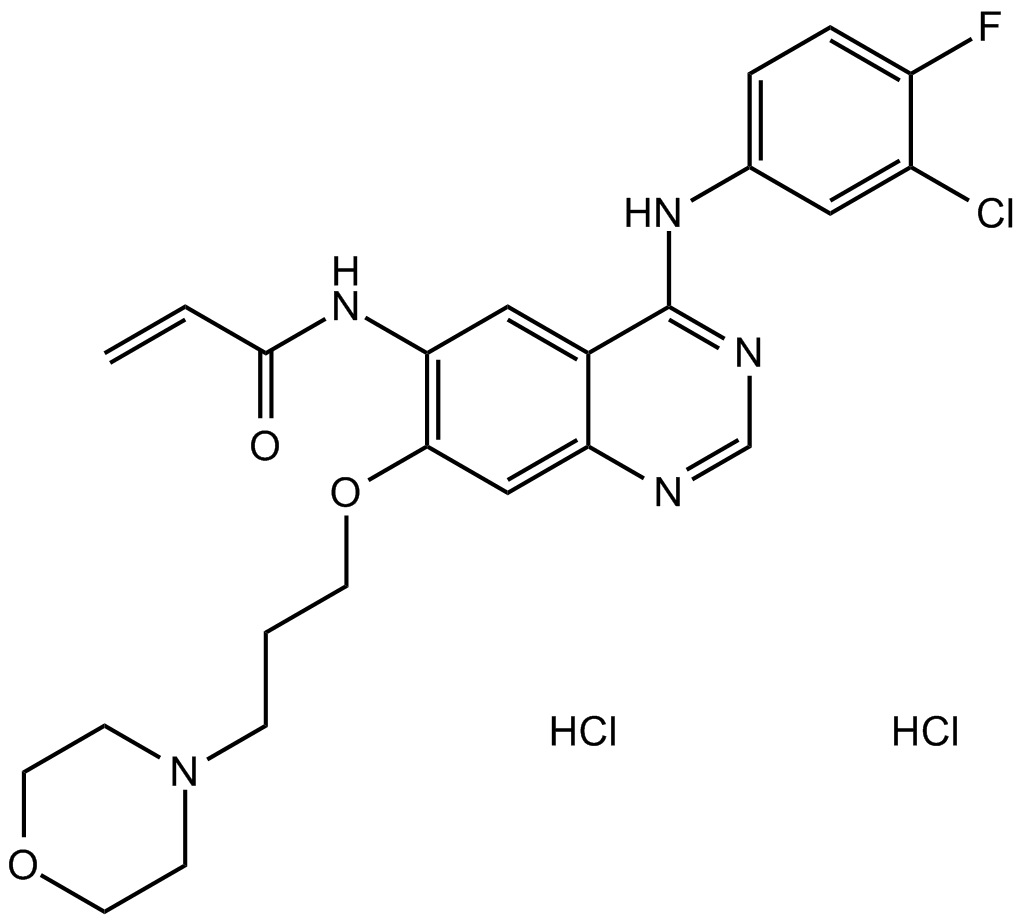
-
GC49433
Capsiate
A capsaicin analog with diverse biological activities

-
GC43198
CAY10717
CAY10717 is a multi-targeted kinase inhibitor that exhibits greater than 40% inhibition of 34 of 104 kinases in an enzymatic assay at a concentration of 100 nM.

-
GC49094
CAY10781
An NRP-1/VEGF-A interaction inhibitor

-
GC40054
CCT241161
CCT241161 is a multi-kinase inhibitor that inhibits B-RAF, B-RAFV600E, C-RAF, Src, and LCK (IC50s = 252, 15, 6, 15, and 3 nM, respectively).

-
GC19092
CCT241736
CCT241736 is a potent and orally bioavailable dual FLT3 and Aurora kinase inhibitor, which inhibits Aurora kinases (Aurora-A Kd, 7.5 nM, IC50, 38 nM; Aurora-B Kd, 48 nM), FLT3 kinase (Kd, 6.2 nM), and FLT3 mutants including FLT3-ITD (Kd, 38 nM) and FLT3(D835Y) (Kd, 14 nM).
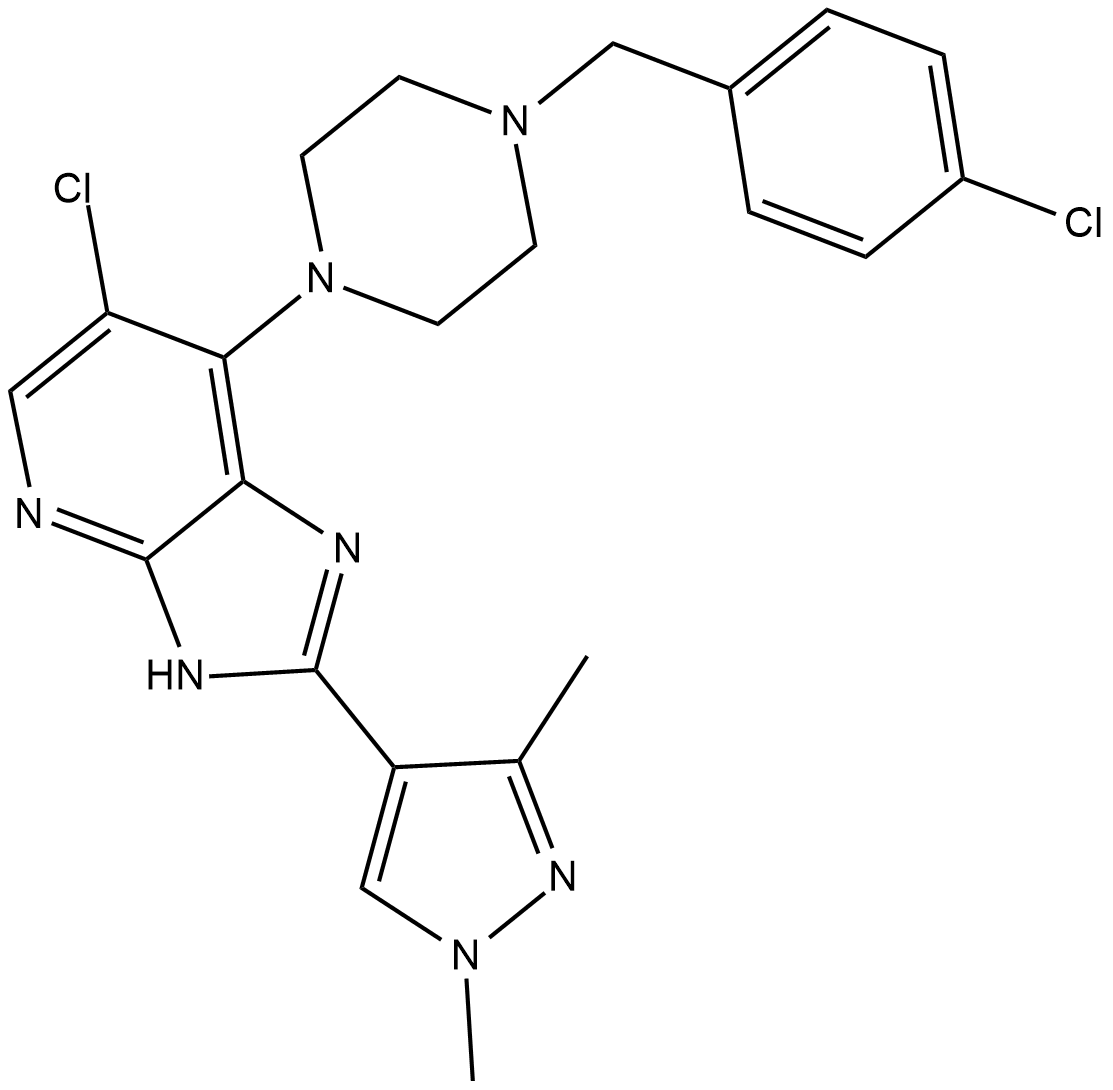
-
GC32623
CE-245677
CE-245677 is a potent reversible inhibitor of Tie2 and TrkA/B kinases with a cellular IC50s of 4.7 and 1 nM.
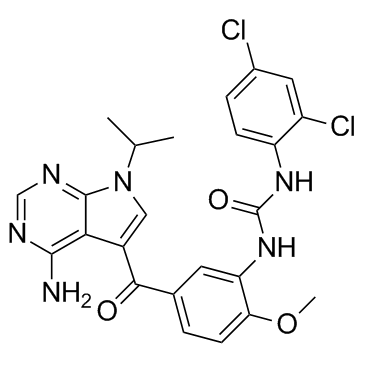
-
GC16421
Cediranib (AZD217)
Cediranib (AZD217) (AZD2171) is a highly potent, orally available VEGFR tyrosine kinase inhibitor with IC50s of <1, <3, 5, 5, 36, 2 nM for Flt1, KDR, Flt4, PDGFRα, PDGFRβ, c-Kit, respectively.
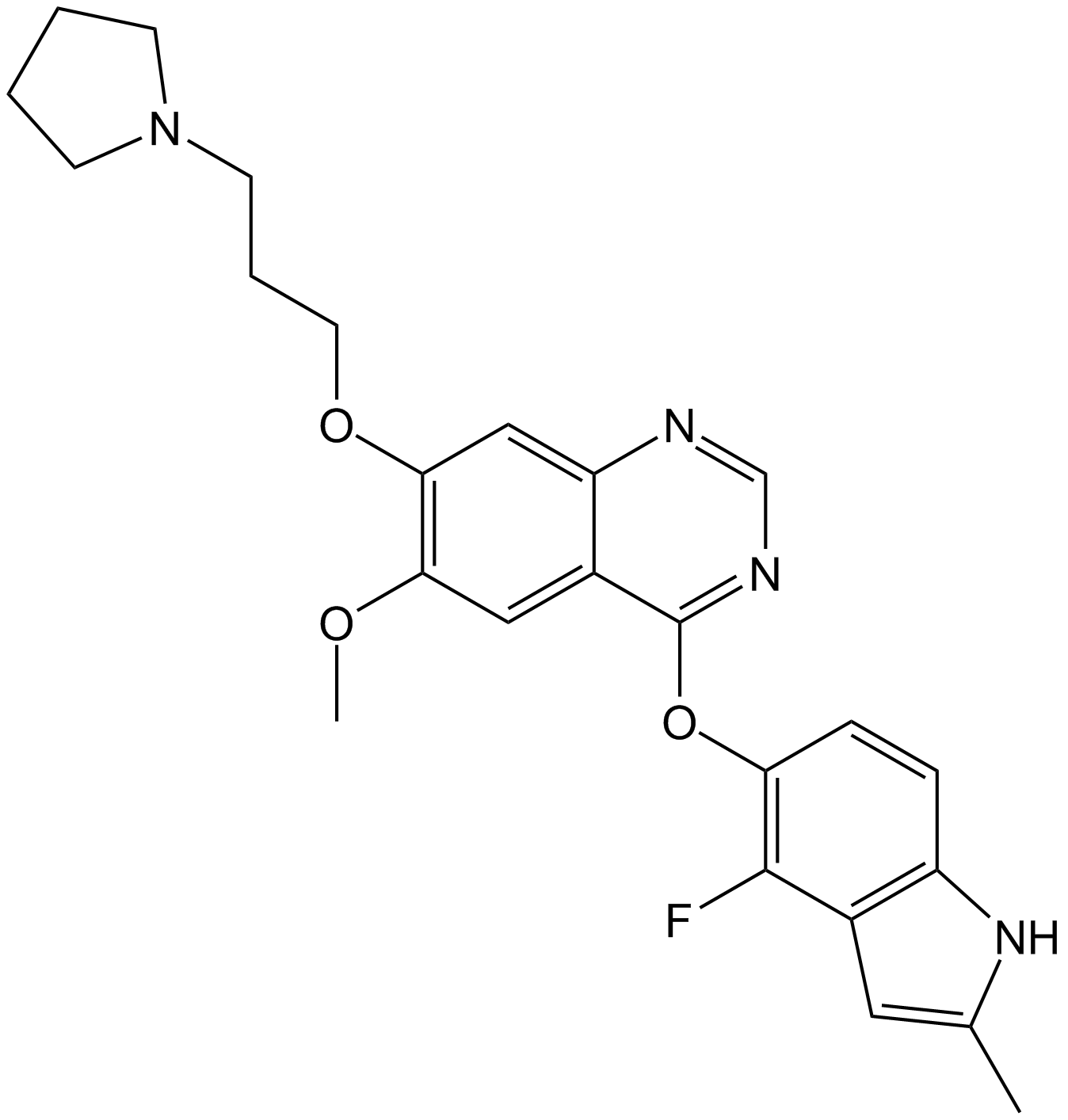
-
GC33004
Cediranib maleate (AZD-2171 maleate)
Cediranib maleate (AZD-2171 maleate) (AZD-2171 maleate) is a highly potent, orally available VEGFR inhibitor with IC50s of <1, <3, 5, 5, 36, 2 nM for Flt1, KDR, Flt4, PDGFRα, PDGFRβ, c-Kit, respectively.
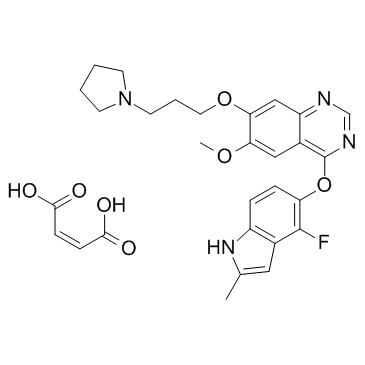
-
GC63458
Cedirogant
Cedirogant (ABBV-157) is an orally active RORγt inverse agonist.
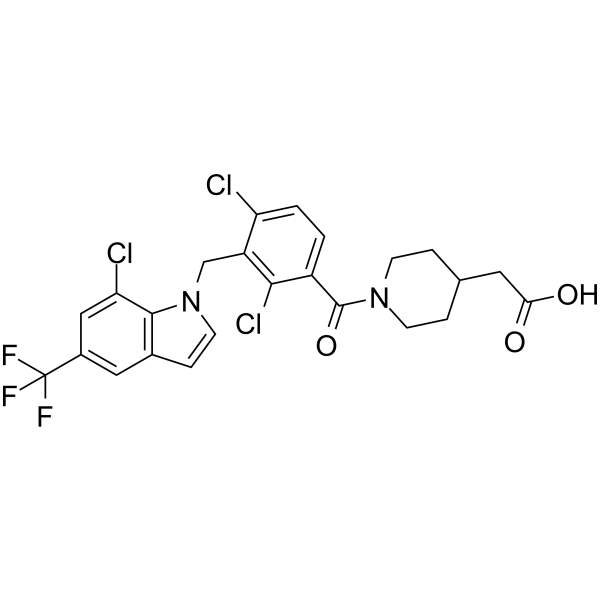
-
GC35651
Cenisertib
Cenisertib (AS-703569) is an ATP-competitive multi-kinase inhibitor that blocks the activity of Aurora-kinase-A/B, ABL1, AKT, STAT5 and FLT3. Cenisertib induces major growth-inhibitory effects by blocking the activity of several different molecular targets in neoplastic mast cells (MC). Cenisertib inhibits tumor growth in xenograft models of pancreatic, breast, colon, ovarian, and lung tumors and leukemia.
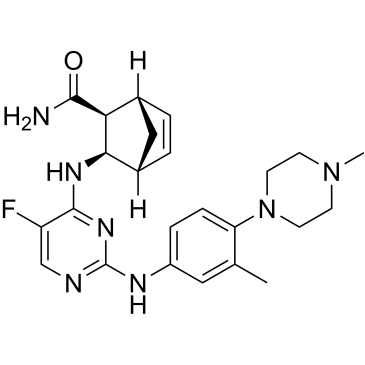
-
GC15145
CEP-28122
anaplastic lymphoma kinase (ALK) inhibitor
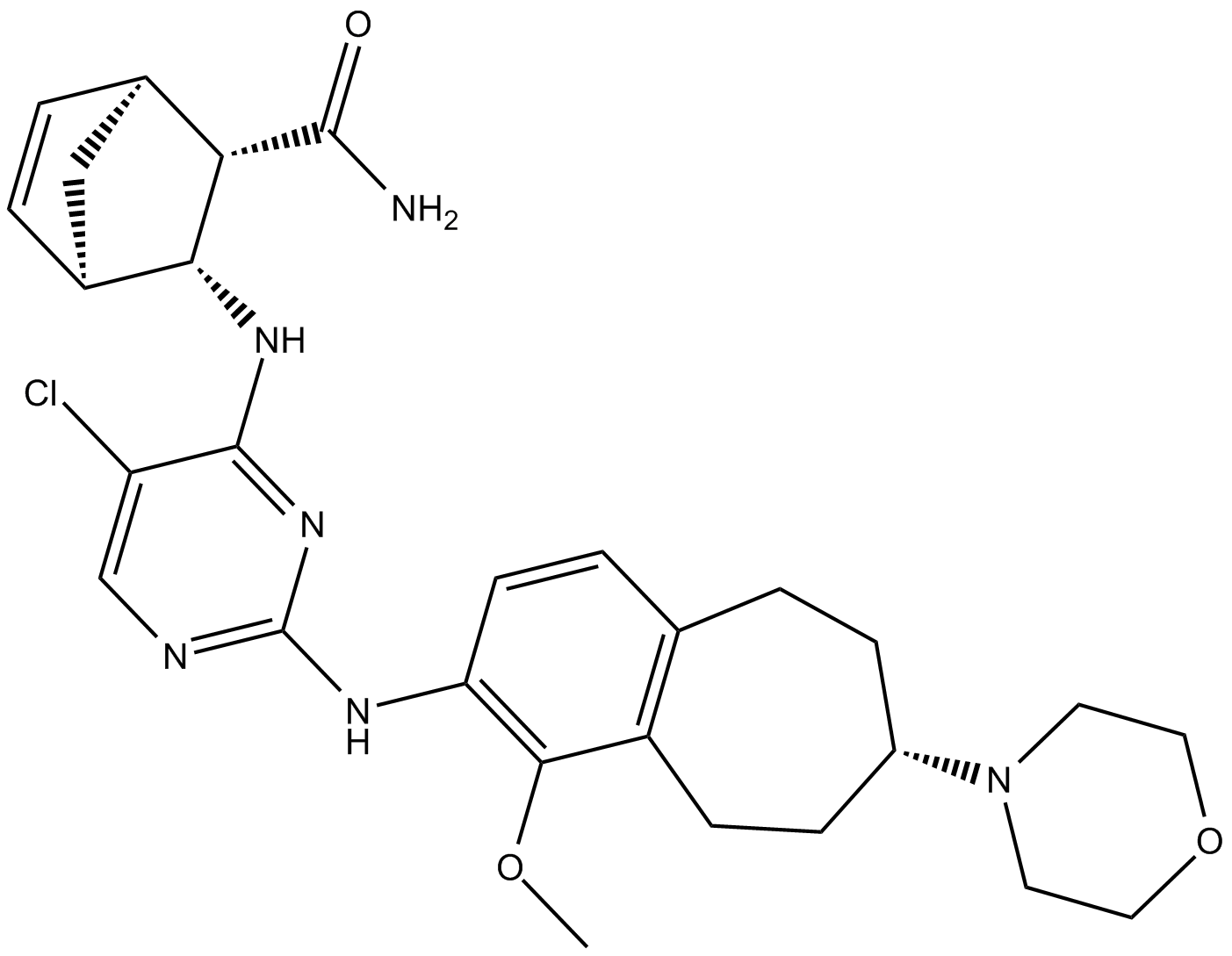
-
GC35652
CEP-28122 mesylate salt
CEP-28122 mesylate salt, a diaminopyrimidine derivative, is a potent, selective, and orally bioavailable ALK inhibitor, with an IC50 value of 1.9 nM for recombinant ALK kinase activity. CEP-28122 has antitumor activity in experimental models of ALK-positive human cancers. CEP-28122 mesylate salt has good pharmacodynamic and pharmacokinetic activity.

-
GC15273
CEP-37440
FAK/ALK inhibitor,potent and selective
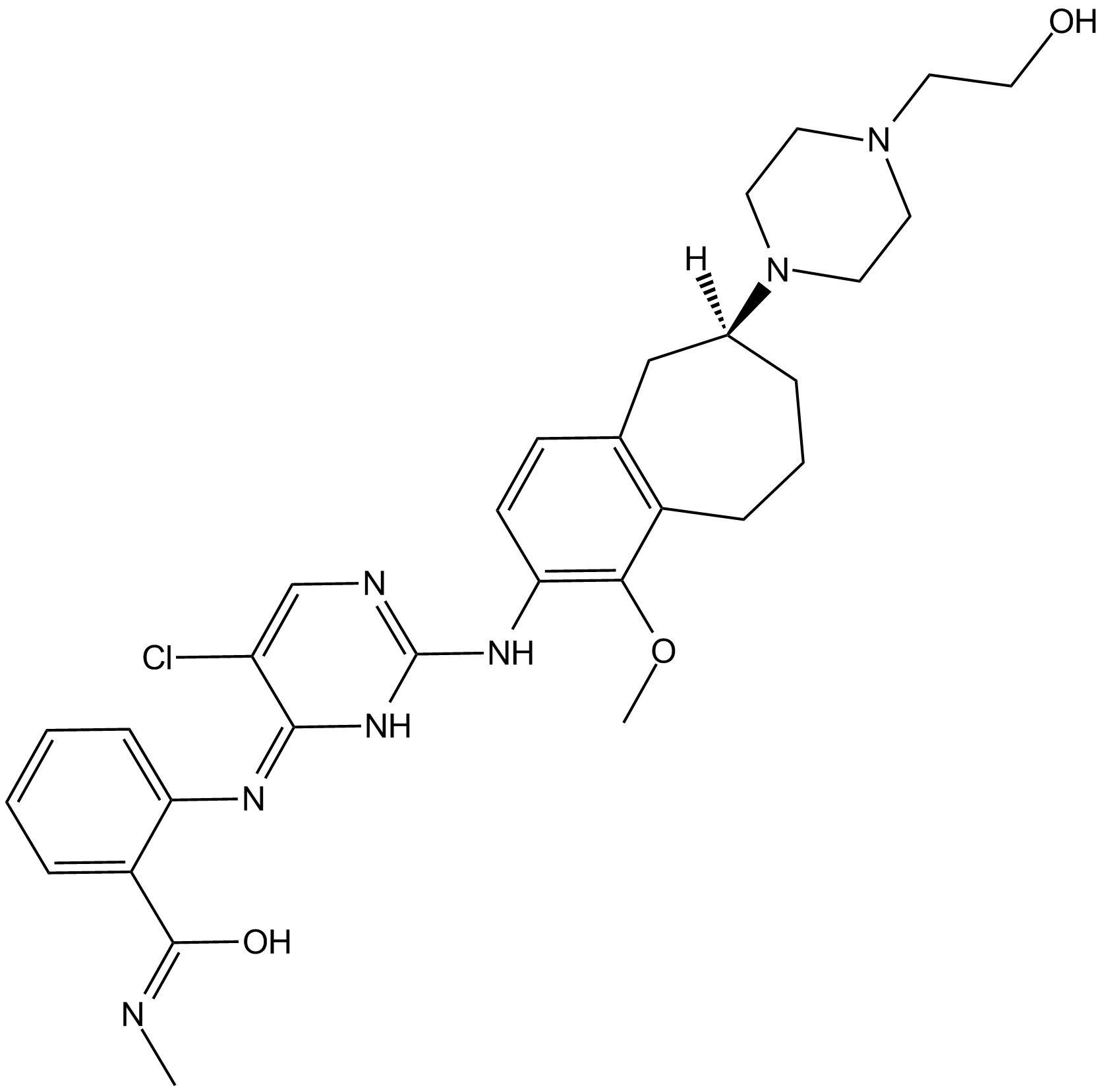
-
GC19102
CEP-40783
CEP-40783 is a potent, selective and orally available inhibitor of AXL and c-Met with IC50 values of 7 nM and 12 nM, respectively.

-
GC11209
Cerdulatinib (PRT062070)
Cerdulatinib (PRT062070) (PRT062070) is a selective Tyk2 inhibitor with an IC50 of 0.5 nM. Cerdulatinib (PRT062070) (PRT062070) also is a dual JAK and SYK inhibitor with IC50s of 12, 6, 8 and 32 for JAK1, 2, 3 and SYK, respectively.

-
GC45789
Ceritinib-d7
An internal standard for the quantification of ceritinib

-
GC34217
Cetuximab (C225)
Cetuximab (C225) (C225) is a human IgG1 monoclonal antibody that inhibits epidermal growth factor receptor (EGFR), with a Kd of 0.201 nM for EGFR by SPR. Cetuximab (C225) has potent antitumor activity.

-
GC63429
Cevidoplenib
Cevidoplenib is an orally active spleen tyrosine kinase (Syk) inhibitor with potential anti-inflammatory and immunomodulatory effects[1].
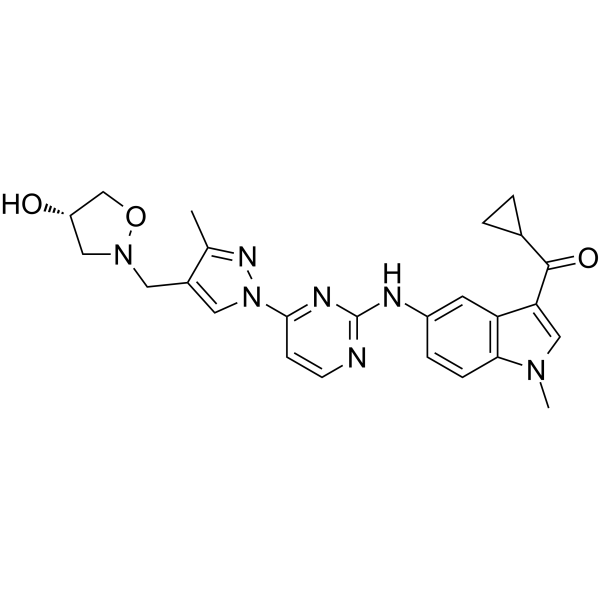
-
GC63455
Cevidoplenib dimesylate
Cevidoplenib is an orally available inhibitor of spleen tyrosine kinase (Syk), with potential anti-inflammatory and immunomodulating activities.
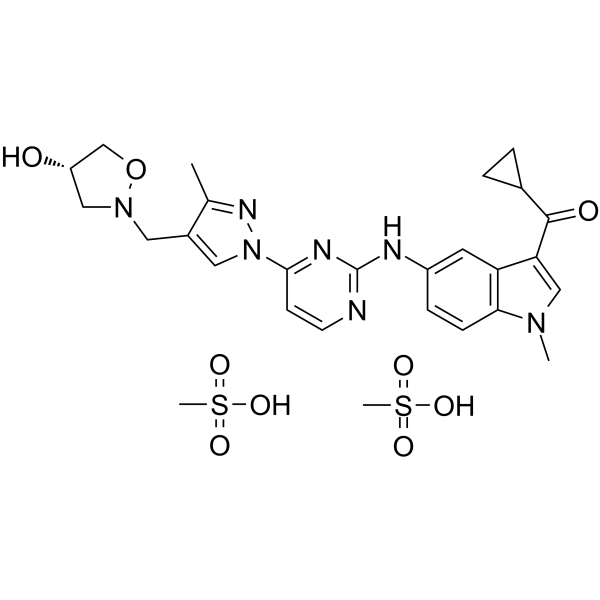
-
GC34528
cFMS Receptor Inhibitor II
cFMS Receptor Inhibitor II is a CSF1R kinase inhibitor.
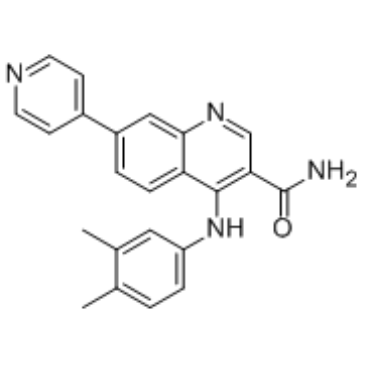
-
GC65976
cFMS Receptor Inhibitor IV
cFMS Receptor Inhibitor IV (Compound 42) is a potent cFMS inhibitor with an IC50 of 0.017 μM.
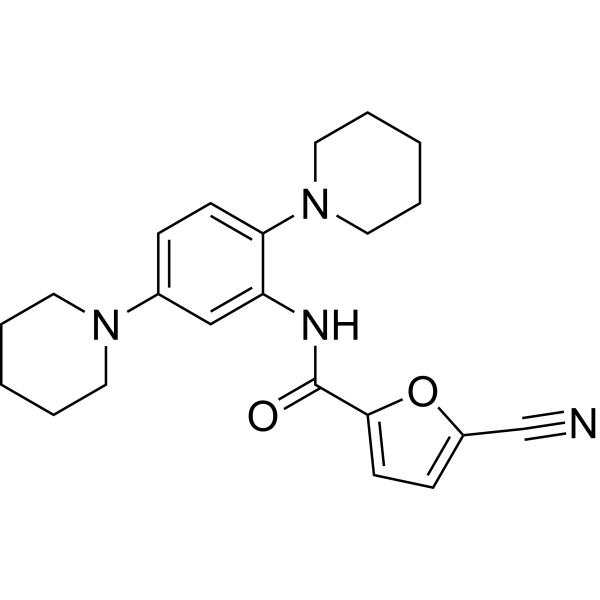
-
GC31726
cFMS-IN-2
cFMS-IN-2 is a FMS kinase inhibitor with an IC50 of 0.024 μM.
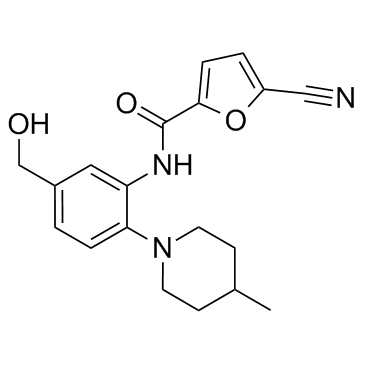
-
GC33064
CG-806 (Luxeptinib)
CG-806 (Luxeptinib) (CG-806) is an orally active, reversible, first-in-class, non-covalent and potent pan-FLT3/pan-BTK inhibitor. CG-806 (Luxeptinib) induces cell cycle arrest, apoptosis or autophagy in acute myeloid leukemia cells.
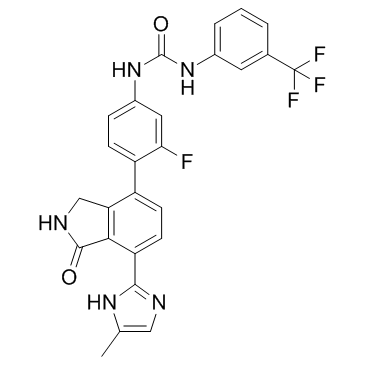
-
GC15950
CGP 52411
EGFR inhibitor
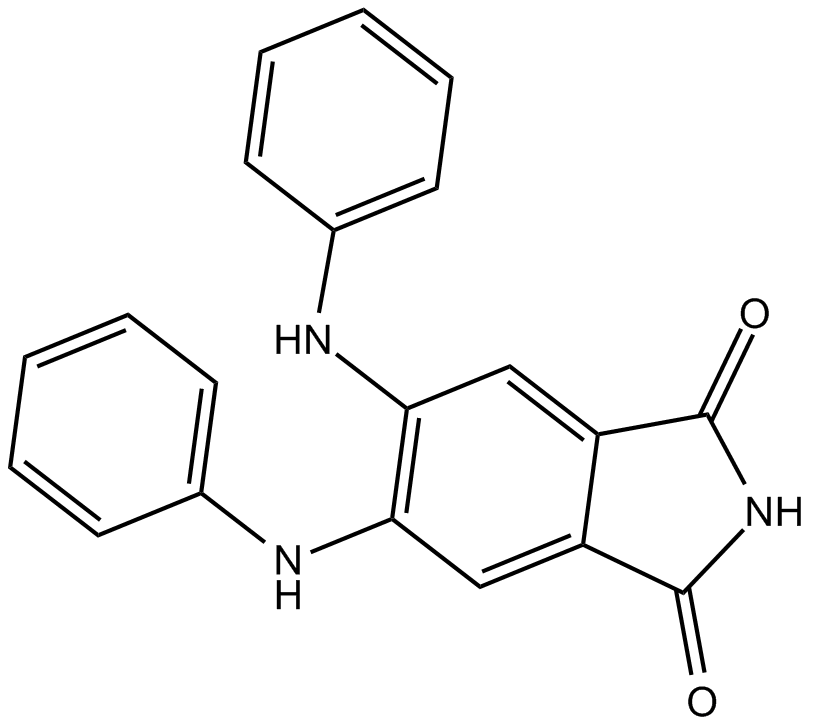
-
GC18438
CGP 77675
CGP 77675 is an inhibitor of Src family kinases (SFKs) that blocks the phosphorylation of peptide substrates and autophosphorylation of purified c-Src (IC50s = 5-20 and 40 nM, respectively).
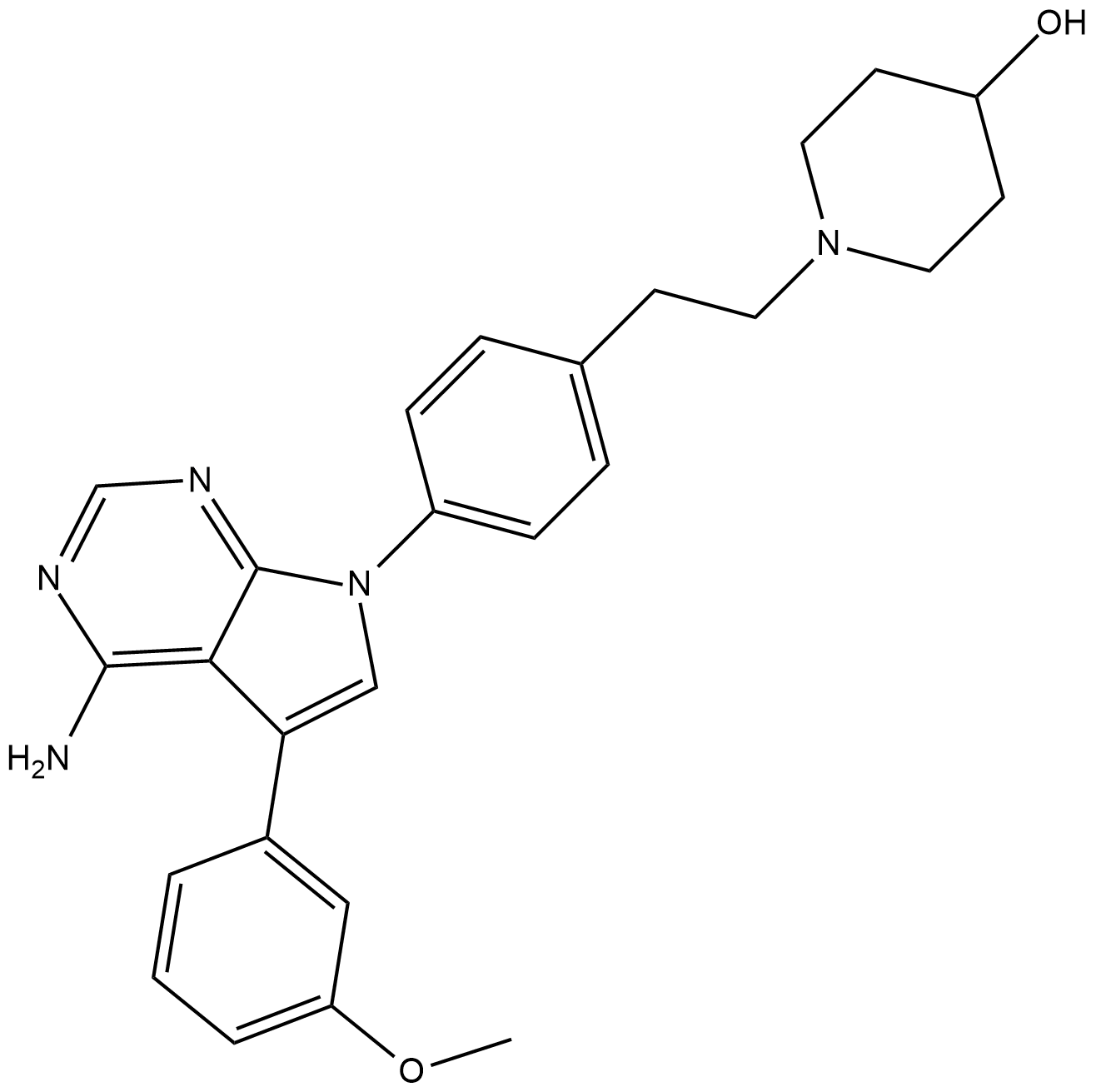
-
GC48992
CGP 77675 (hydrate)
An inhibitor of Src family kinases

-
GC14650
CGP60474
A CDK inhibitor
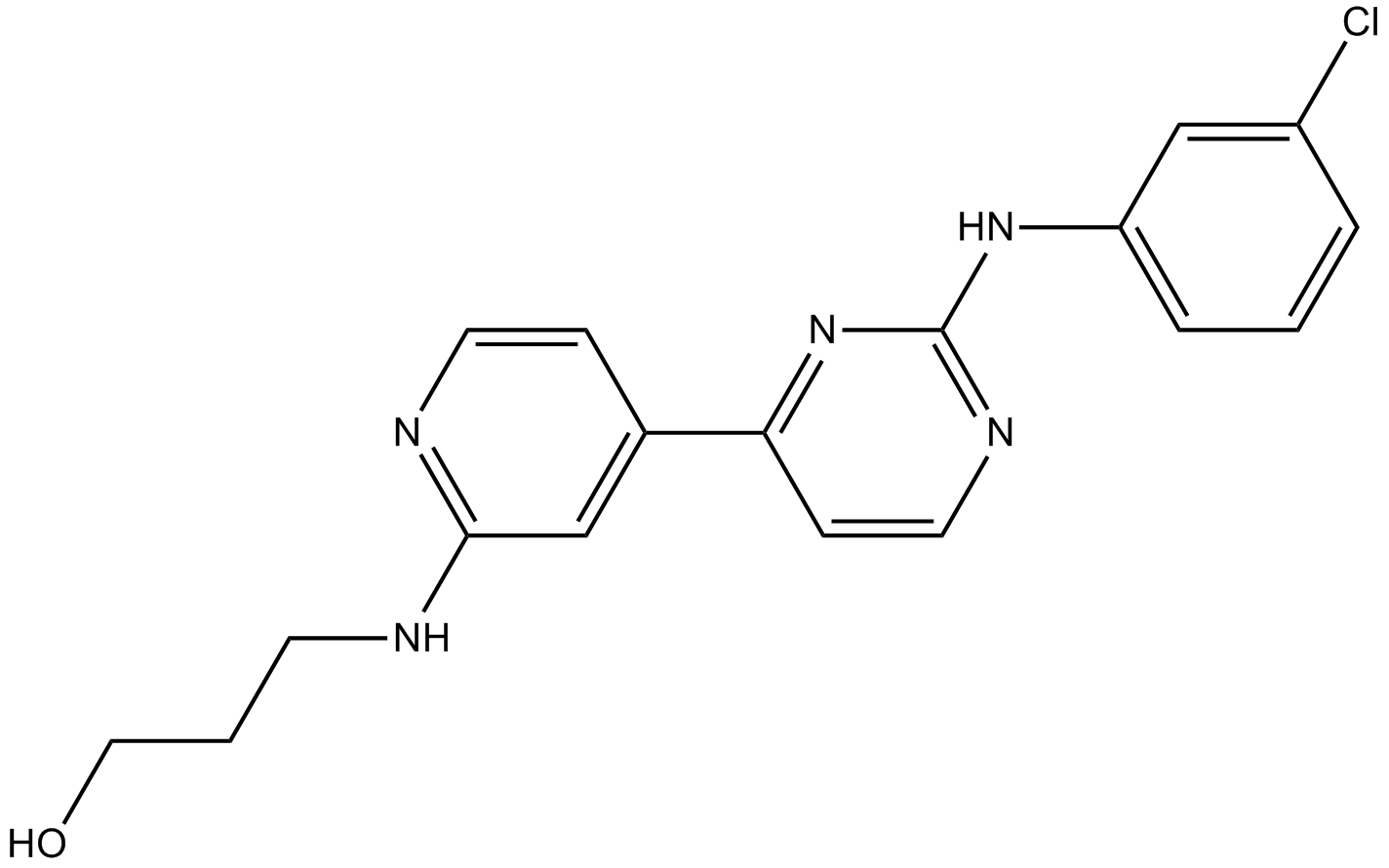
-
GC10759
CH5183284 (Debio-1347)
CH5183284 (Debio-1347) (Debio 1347) is an orally available and selective FGFR inhibitor with IC50s of 9.3, 7.6, and 22 nM for FGFR1, FGFR2, FGFR3, and FGFR4, respectively.
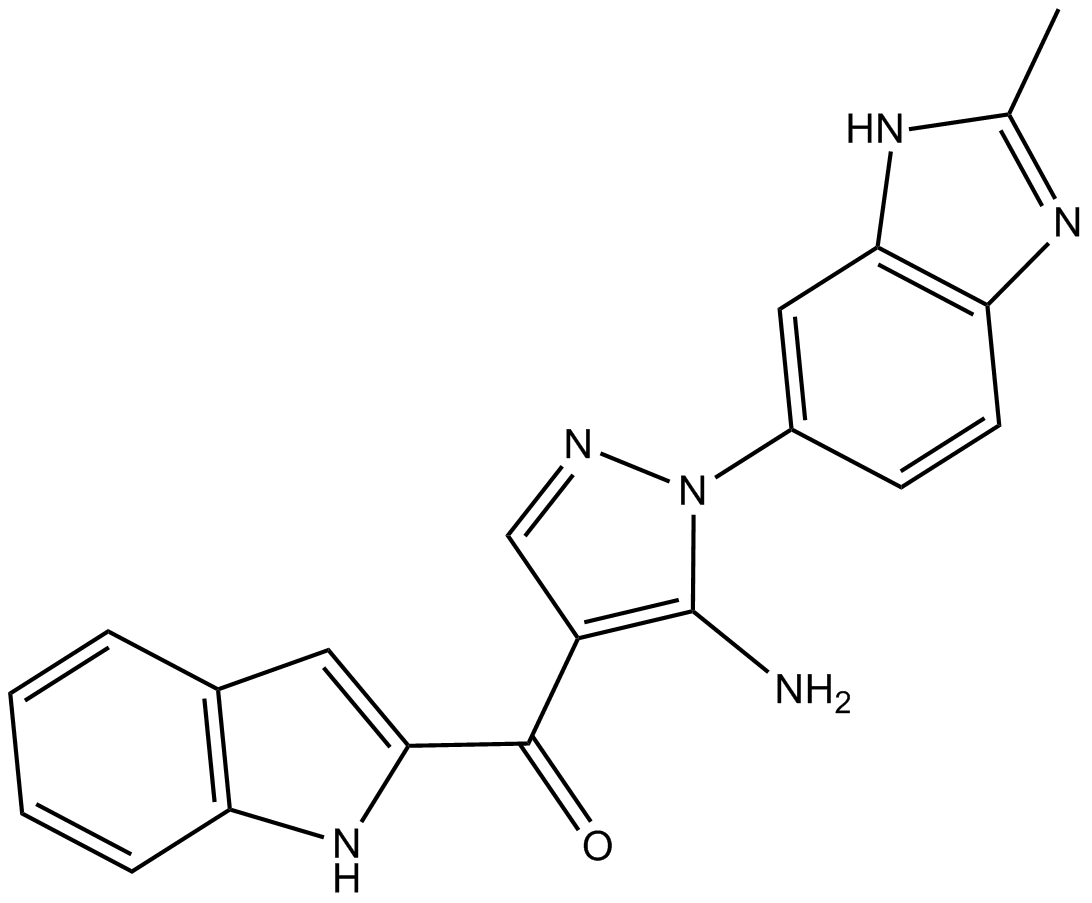
-
GC16025
CH5424802
CH5424802 (CH5424802) is a potent, selective, and orally available ALK inhibitor with an IC50 of 1.9 nM and a Kd value of 2.4 nM (in an ATP-competitive manner), and also inhibits ALK F1174L and ALK R1275Q with IC50s of 1 nM and 3.5 nM, respectively. CH5424802 demonstrates effective central nervous system (CNS) penetration.
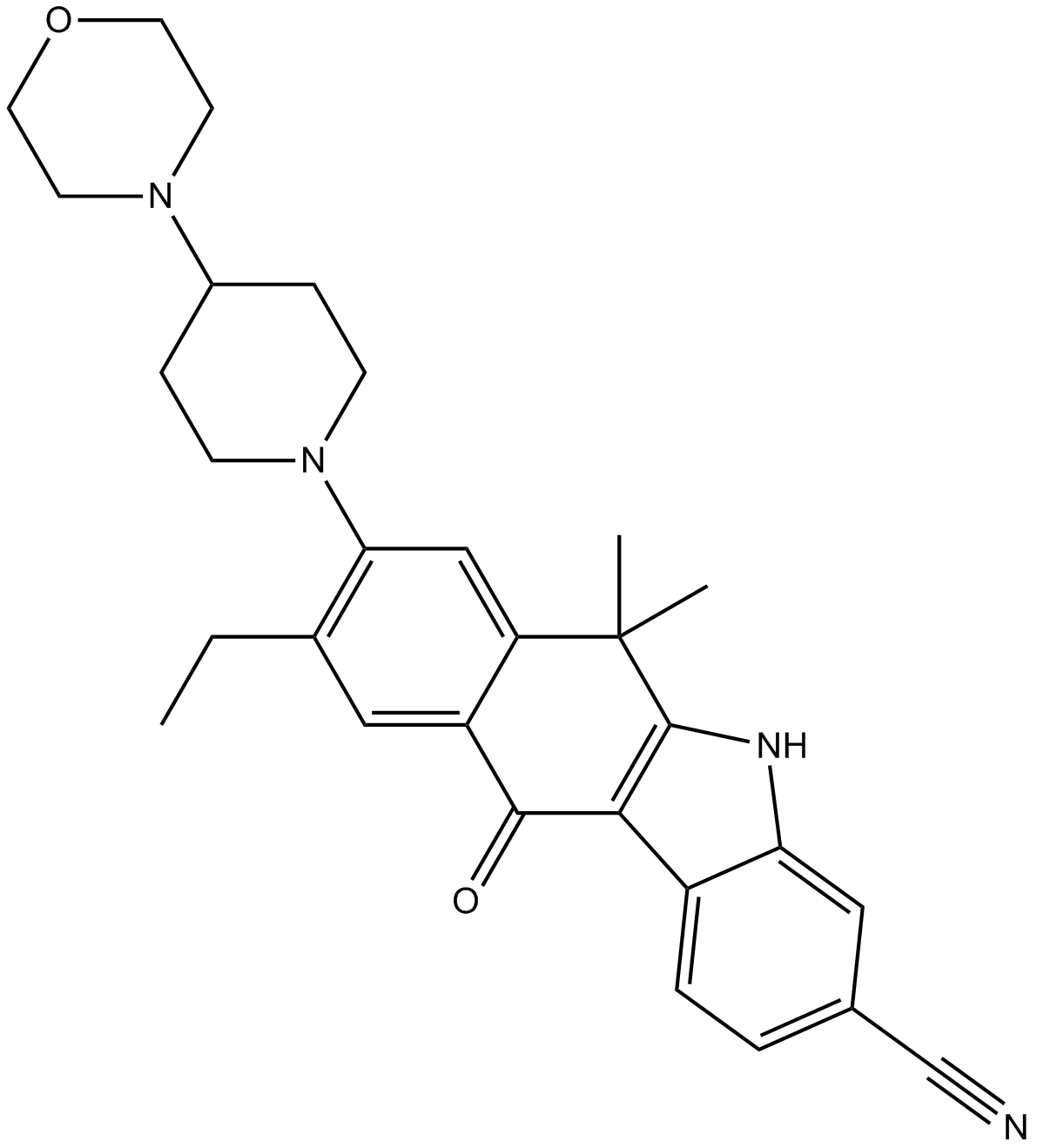
-
GC33112
CH7057288
CH7057288 is a potent and selective TRK inhibitor.
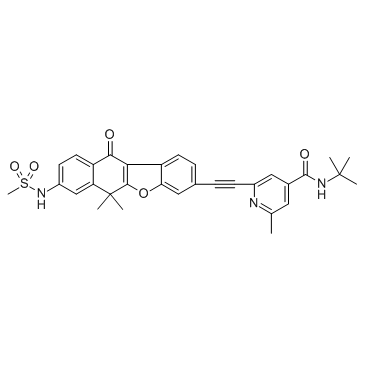
-
GC25219
CH7233163
CH7233163 is a non-covalent ATP competitive inhibitor of EGFR-tyrosine kinase with antitumor activities against tumor with EGFR-Del19/T790M/C797S.
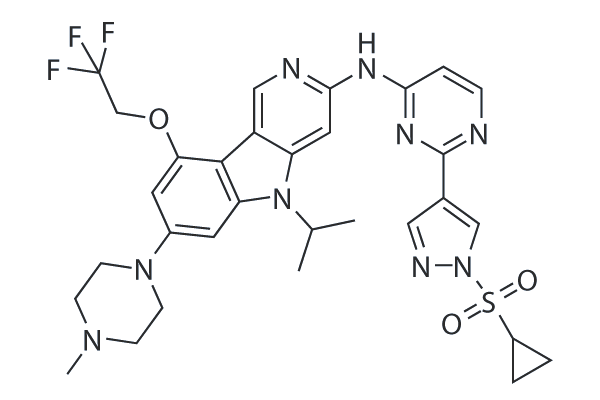
-
GC62145
Chiauranib
Chiauranib (CS2164) is an orally active multi-target inhibitor against tumor angiogenesis. Chiauranib potently inhibits the angiogenesis-related kinases (VEGFR1, VEGFR2, VEGFR3, PDGFRα and c-Kit), mitosis-related kinase Aurora B, and chronic inflammation-related kinase CSF-1R, with IC50 values ranging from 1-9 nM. Chiauranib has strongly anticancer effects.

-
GC15739
CHIR-124
Chk1 inhibitor,novel and potent
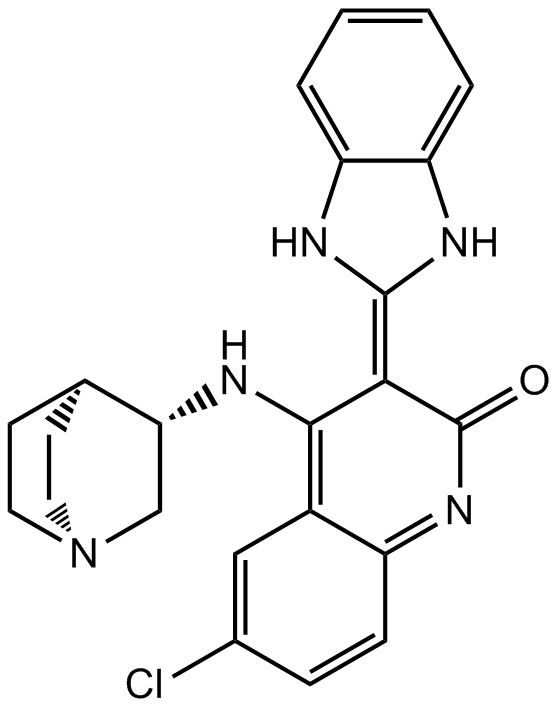
-
GC32979
Chloropyramine hydrochloride
Chloropyramine hydrochloride is a histamine receptor H1 antagonist which can also inhibit the biochemical function of VEGFR-3 and FAK.
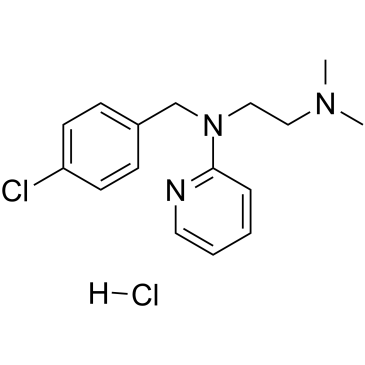
-
GC17294
CHMFL-ABL-053
BCR-ABL inhibitor
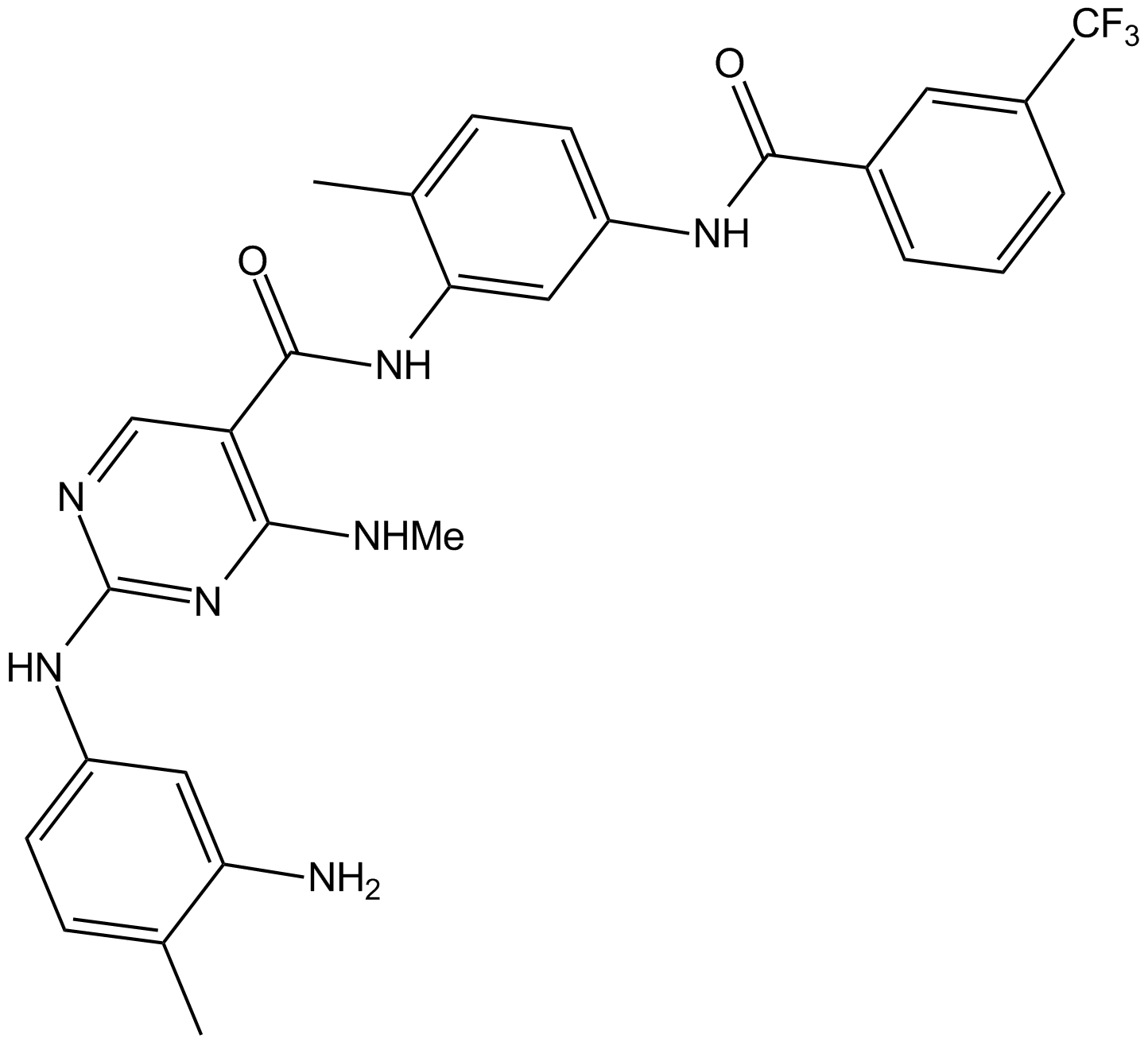
-
GC35682
CHMFL-ABL/KIT-155
CHMFL-ABL/KIT-155 (CHMFL-ABL-KIT-155; compound 34) is a highly potent and orally active type II ABL/c-KIT dual kinase inhibitor (IC50s of 46 nM and 75 nM, respectively), and it also presents significant inhibitory activities to BLK (IC50=81 nM), CSF1R (IC50=227 nM), DDR1 (IC50=116 nM), DDR2 (IC50=325 nM), LCK (IC50=12 nM) and PDGFRβ (IC50=80 nM) kinases. CHMFL-ABL/KIT-155 (CHMFL-ABL-KIT-155) arrests cell cycle progression and induces apoptosis.
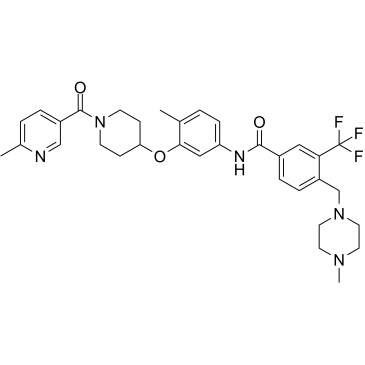
-
GC33020
CHMFL-BMX-078 (CHMFL-BMX 078)
CHMFL-BMX-078 (CHMFL-BMX 078) is a highly potent and selective type II irreversible BMX kinase inhibitor with an IC50 of 11 nM.
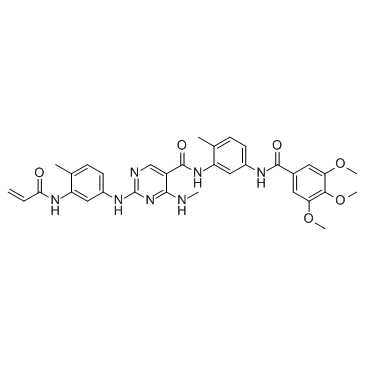
-
GC35684
CHMFL-EGFR-202
CHMFL-EGFR-202 is a potent, irreversible inhibitor of epidermal growth factor receptor (EGFR) mutant kinase, with IC50s of 5.3 nM and 8.3 nM for drug-resistant mutant EGFR T790M and WT EGFR kinases, respectively. CHMFL-EGFR-202 exhibits ?10-fold selectivity for EGFR L858R/T790M against the EGFR wild-type in cells. CHMFL-EGFR-202 adopts a covalent “DFG-in-C-helix-out” inactive binding conformation with EGFR, with strong antiproliferative effects against EGFR mutant-driven nonsmall-cell lung cancer (NSCLC) cell lines.
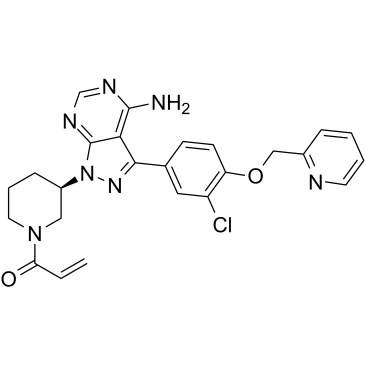
-
GC35685
CHMFL-KIT-033
CHMFL-KIT-033 is a potent and selective inhibitor of c-KIT T670I mutant for gastrointestinal stromal tumors (GISTs), with an IC50 of 0.045 μM.
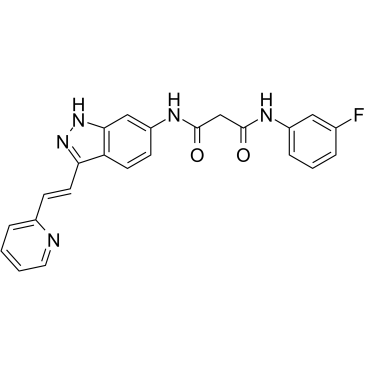
-
GN10327
Chrysophanol
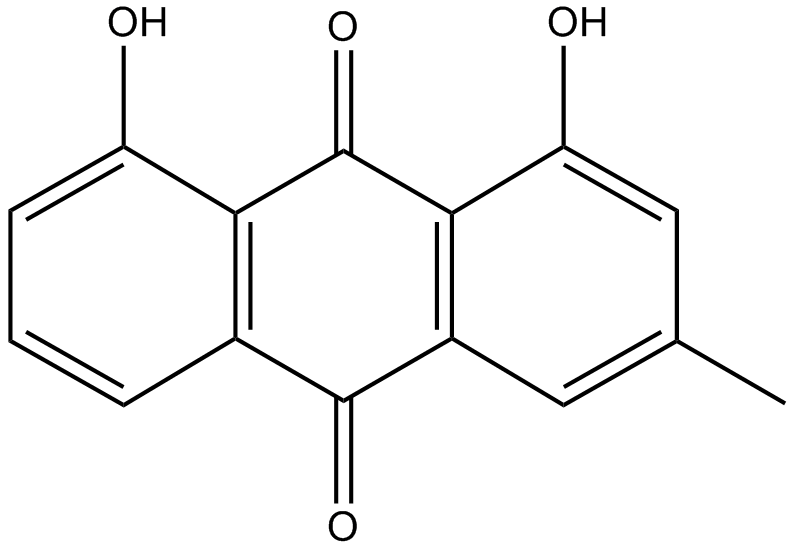
-
GC43268
Cinnamtannin B-1
Cinnamtannin B-1 is a proanthocyanidin polyphenol originally isolated from cinnamon bark that has antioxidant properties.

-
GC32713
Cintirorgon (LYC-55716)
Cintirorgon (LYC-55716) (LYC-55716) is a first-in-class, selective and orally bioavailable RORγ agonist. Cintirorgon (LYC-55716) (LYC-55716) modulates gene expression of RORγ expressing T lymphocyte immune cells, resulting in enhanced effector function, as well as decreased immunosuppression, resulting in decreased tumor growth, and improved survival.
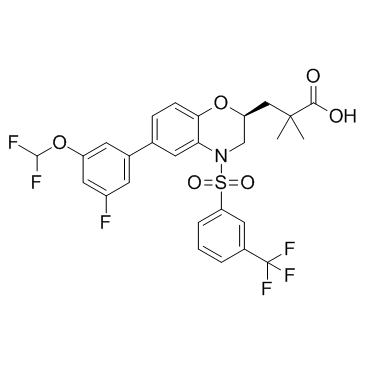
-
GC39485
CK2/ERK8-IN-1
A dual inhibitor of CK2 and ERK8
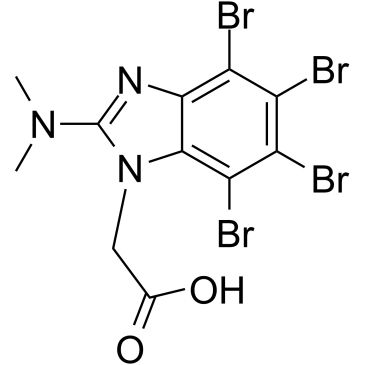
-
GC17790
CL-387785 (EKI-785)
CL-387785 (EKI-785)(EKI785; WAY-EKI 785) is an irreversible inhibitor of EGFR with IC50 of 370 pM.
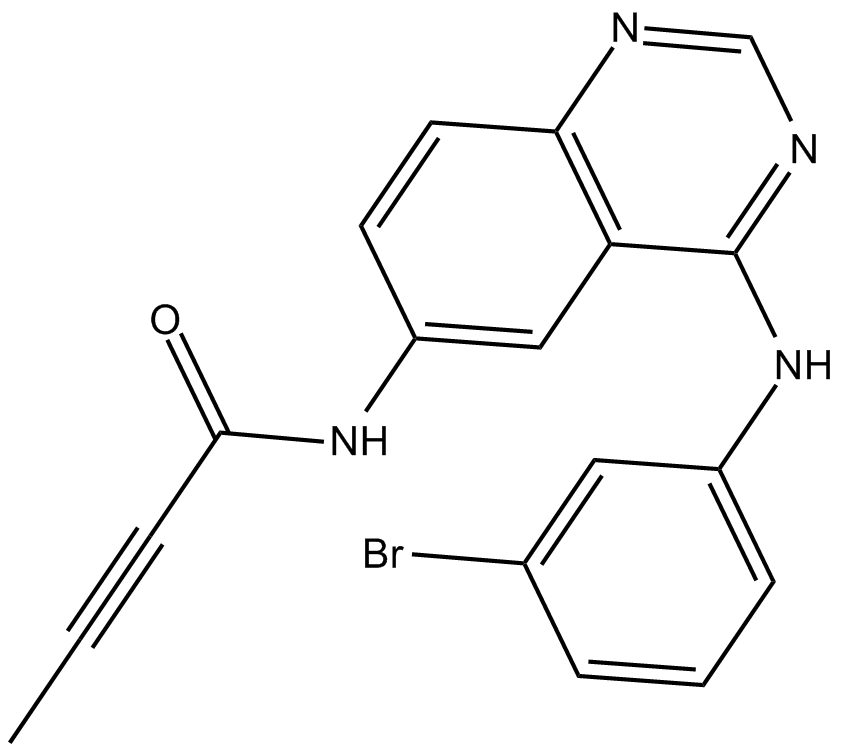
-
GC11264
CNX-2006
mutant-EGFR inhibitor, selective and irreversible
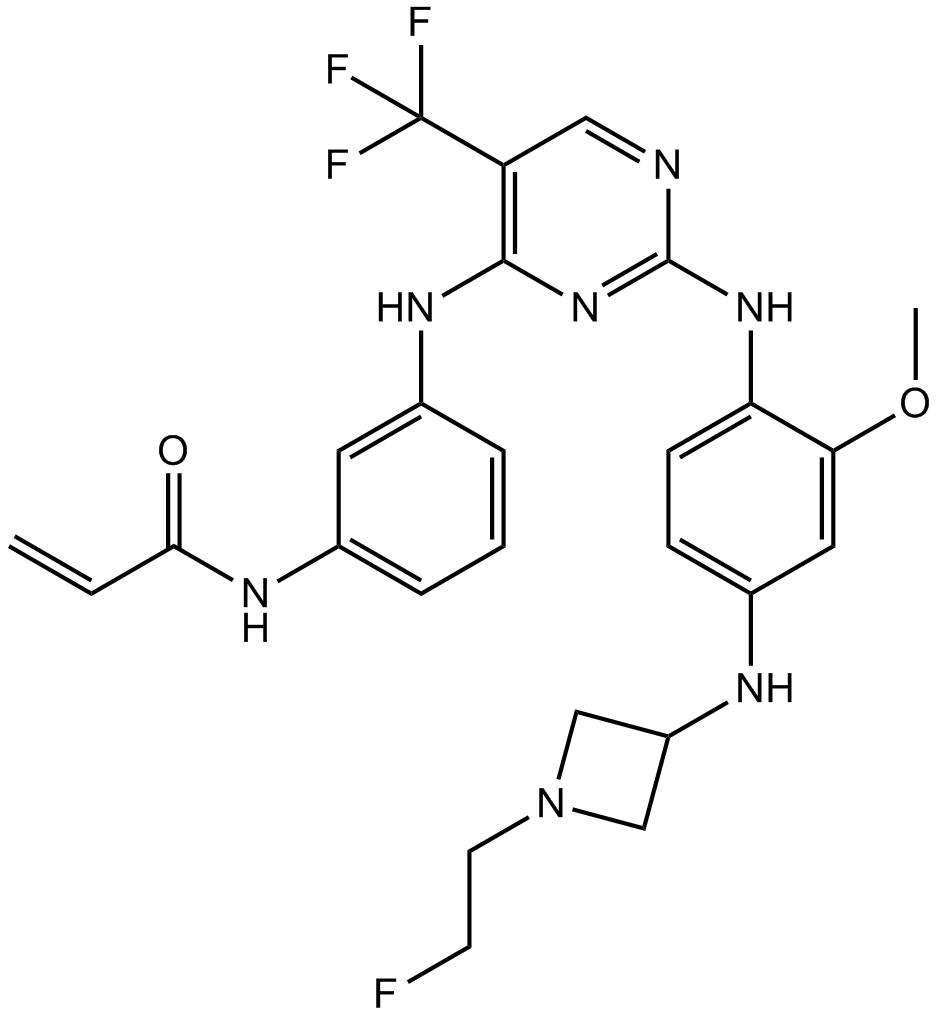
-
GC14695
CO-1686 (AVL-301)
A selective inhibitor of mutant EGFR
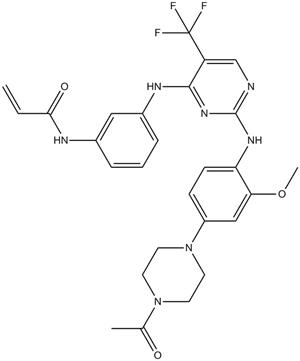
-
GC12837
Compound 56
A potent EGFR inhibitor
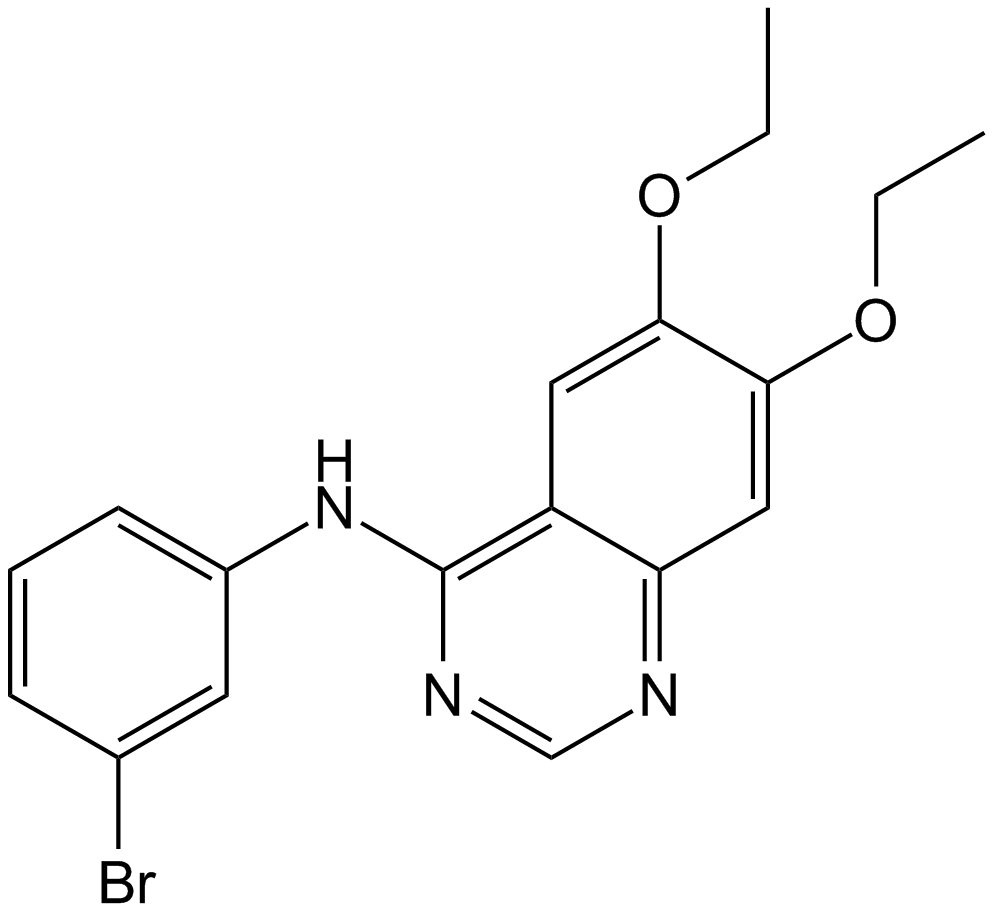
-
GC46123
Comprehensive Kinase Screening Library
For screening of a variety of kinase inhibitors

-
GC35728
Conteltinib
Conteltinib (CT-707) is a multi-kinase inhibitor targeting FAK, ALK, and Pyk2. Conteltinib exerts significant inhibitory effect on FAK with an IC50 of 1.6 nM.
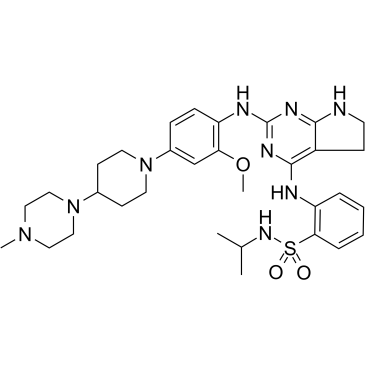
-
GC33352
CP-547632
A potent inhibitor of VEGFR2 and bFGF
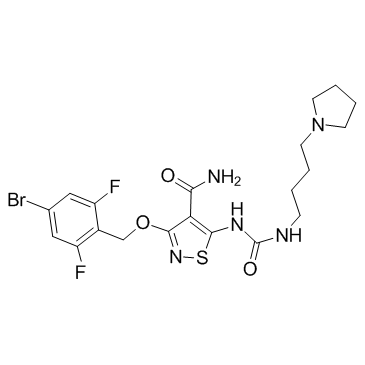
-
GC38575
CP-547632 hydrochloride
CP-547632 hydrochloride is an orally active, ATP-competitive and potent VEGFR-2 and FGF kinases inhibitor with IC50s of 11 nM and 9 nM, respectively. CP-547632 hydrochloride is selective for VEGFR2 and bFGF over EGFR, PDGFRβ, and related tyrosine kinases (TKs). CP-547632 hydrochloride has antitumor efficacy.
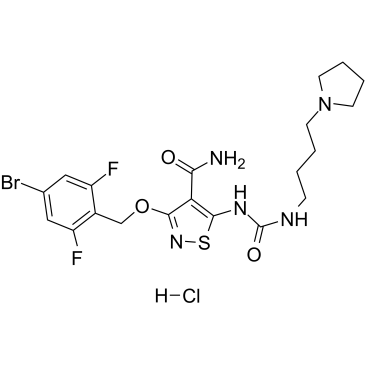
-
GC60726
CP-547632 TFA
CP-547632 TFA is an orally active, ATP-competitive and potent VEGFR-2 and FGF kinases inhibitor with IC50s of 11 nM and 9 nM, respectively. CP-547632 TFA is selective for VEGFR2 and bFGF over EGFR, PDGFRβ, and related tyrosine kinases (TKs). CP-547632 TFA has antitumor efficacy.
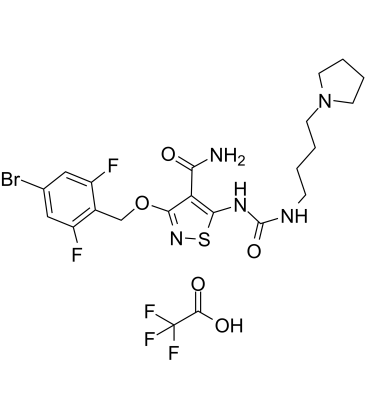
-
GC12980
CP-673451
PDGFRα/β inhibitor,potent and selective
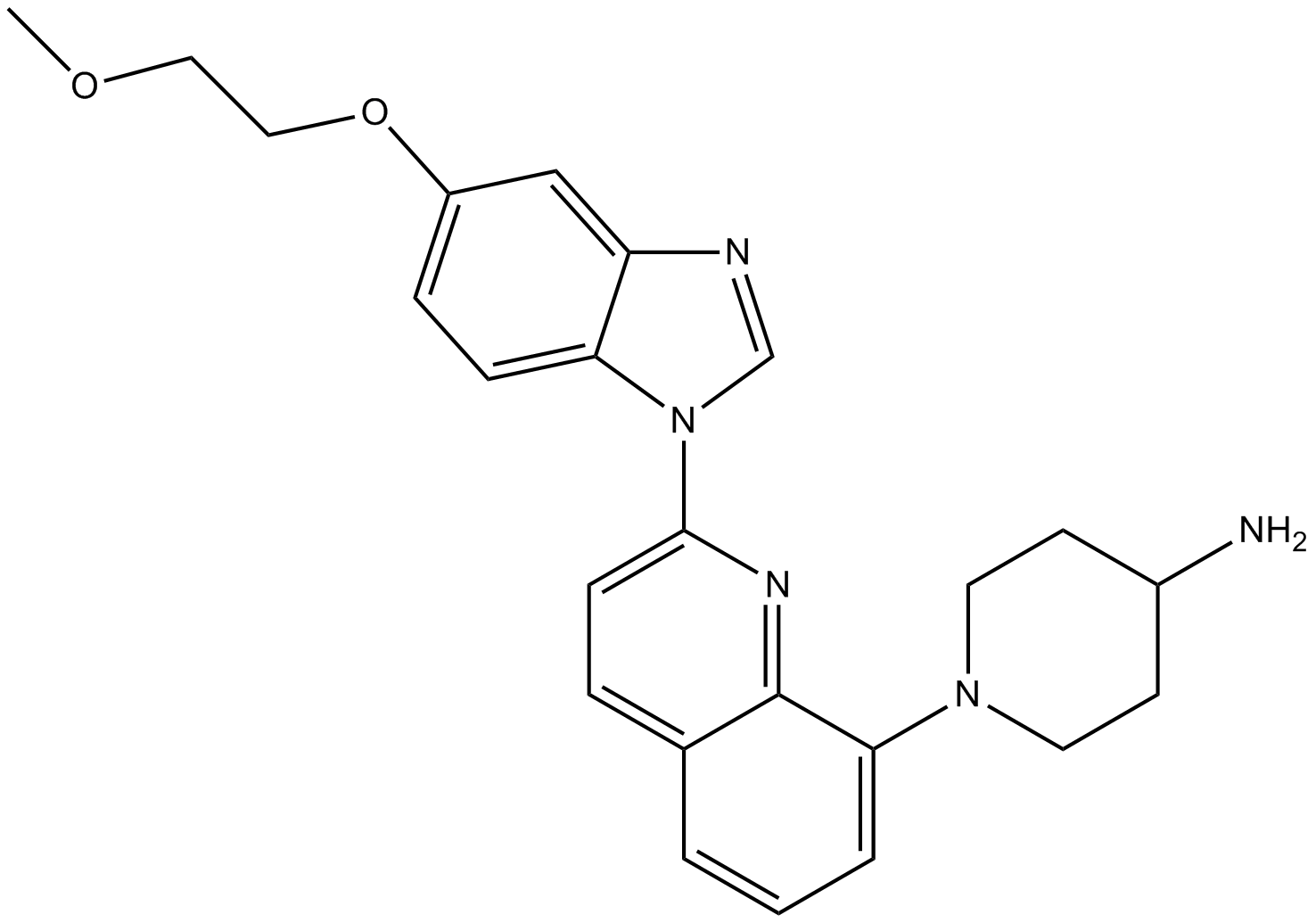
-
GC13091
CP-724714
HER2 inhibitor,potent and selective
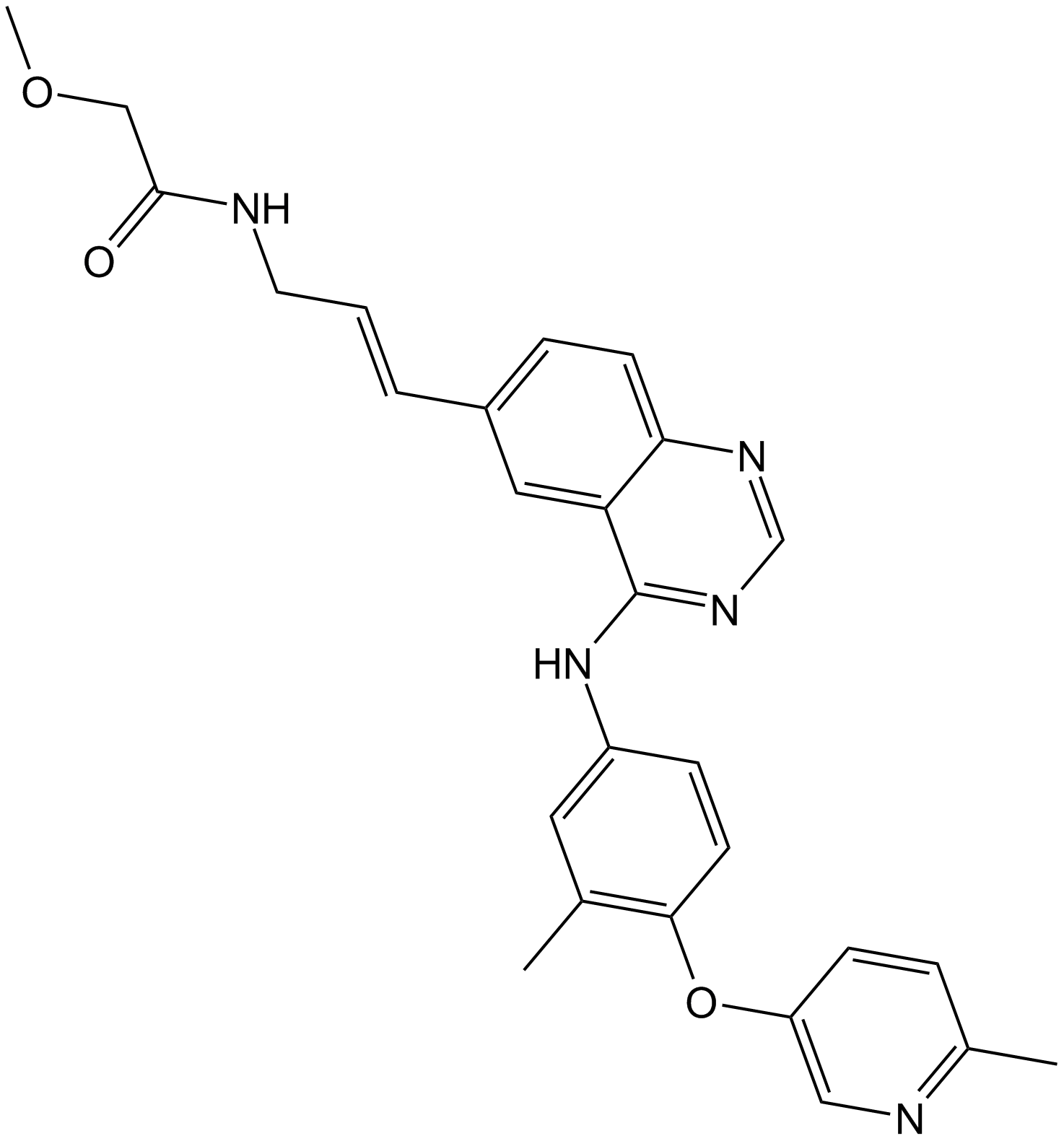
-
GC62274
CPL304110
CPL304110 is a potent, orally active and selective inhibitor of fibroblast growth factor receptors FGFR (1-3), with IC50 values of 0.75 nM, 0.5 nM, and 3.05 nM for FGFR (1-3), respectively.
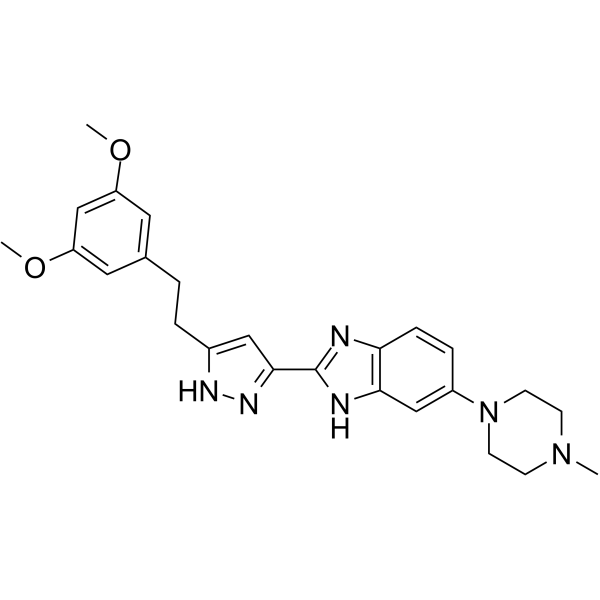
-
GC14906
Crenolanib (CP-868596)
Crenolanib (CP-868596) is a potent and selective inhibitor of wild-type and mutant isoforms of the class III receptor tyrosine kinases FLT3 and PDGFRα/β with Kds of 0.74 nM and 2.1 nM/3.2 nM, respectively.

-
GC12616
Crizotinib hydrochloride
inhibitor of the c-Met kinase and the NPM-ALK

-
GC38412
Crotonoside
A guanosine analog with diverse biological activities
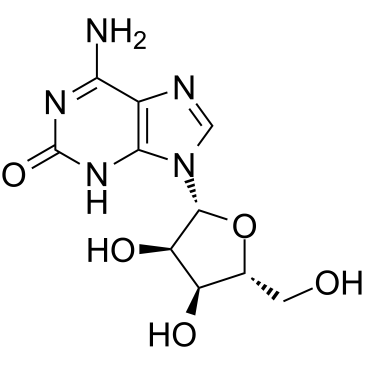
-
GC25313
CS-2660 (JNJ-38158471)
CS-2660 (JNJ-38158471) is a well tolerated, orally available, highly selective VEGFR-2 inhibitor with IC50 of 40 nM. CS-2660 (JNJ-38158471) also inhibits closely related tyrosine kinases such as RET (c-RET) and Kit (c-Kit) with IC50 of 180 nM and 500 nM,while it has no significant activity (>1 microM) against VEGFR-1 and VEGFR-3.
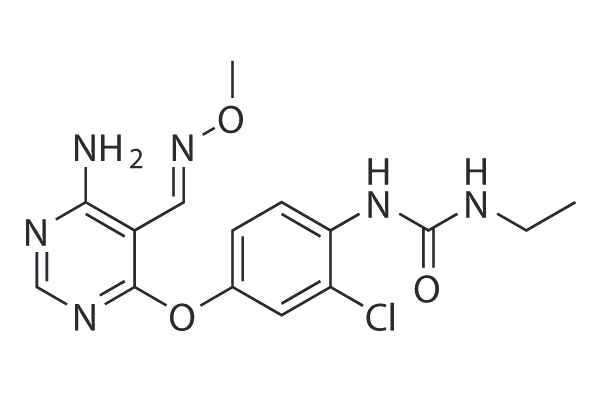
-
GC33241
CSF1R-IN-1
CSF1R-IN-1 is a CSF1R inhibitor with an with an IC50 of 0.5 nM.
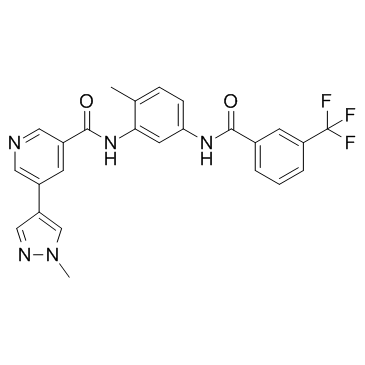
-
GC64961
CSF1R-IN-2
CSF1R-IN-2 (compound 5) is an oral-active inhibitor of SRC, MET and c-FMS, with IC50 values of 0.12 nM, 0.14 nM and 0.76 nM for SRC, MET and c-FMS respectively.
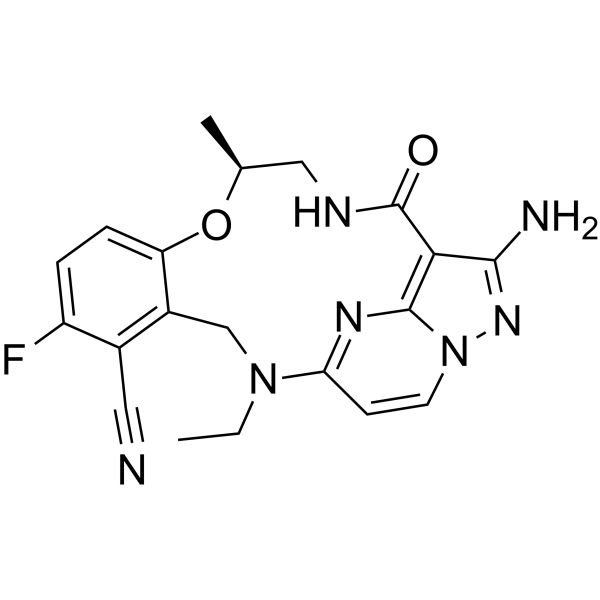
-
GC64805
CSF1R-IN-3
CSF1R-IN-3 (compound 21) is a potent and orally active CSF-1R inhibitor (IC50=2.1 nM). CSF1R-IN-3 is a potent antiproliferative activity against colorectal cancer cells. CSF1R-IN-3 inhibits the progression of colorectal cancer by suppressing the migration of macrophages, reprograming M2-like macrophages to the M1 phenotype, and enhancing the antitumor immunity.

-
GC35753
CT-721
CT-721 is a potent and time-dependent Bcr-Abl kinase inhibitor with an IC50 of 21.3 nM for wild-type Bcr-Abl kinase, and possesses anti-chronic myeloid leukemia (CML) activities.
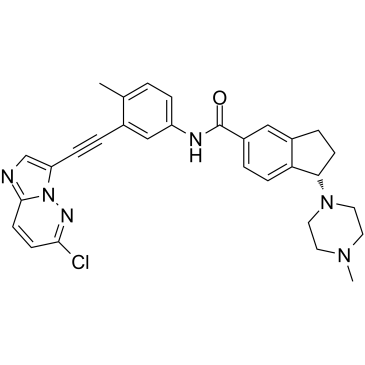
-
GC67774
CT52923
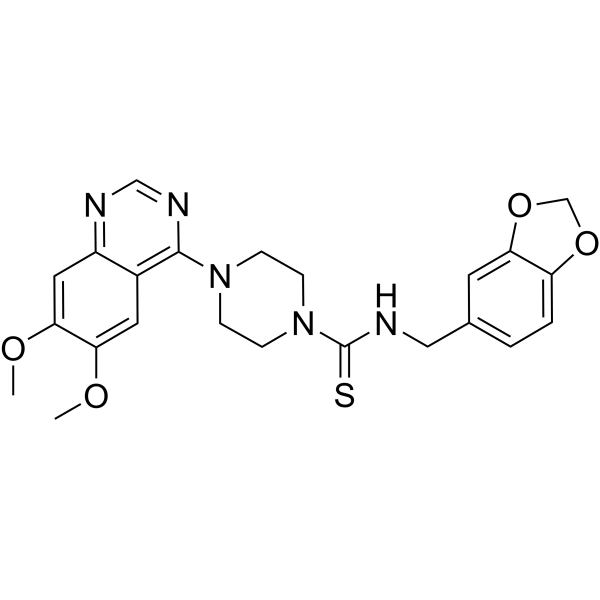
-
GC50076
CTA 056
ITK inhibitor
